A village on its last legs? Cachopo is small, cute and noisy, but is it going the same way as the abandoned village, Roche Amarela, we visited a few days ago?
We spent the night in Cachopo and had a wander around the village before dinner. Like Guisando it had all the essentials; a shop, bars, school and church. It even had a garage on the outskirts. But there is something really sad about Cachopo, very different from Guisando. In amongst the well maintained buildings sit derelict ones.
Some of these are being used as dumping grounds for all the rubbish of the village. Or is it that the floors and roofs have collapsed with all the furniture within them?. This must be a real problem for vermin. Is the village beset by rats?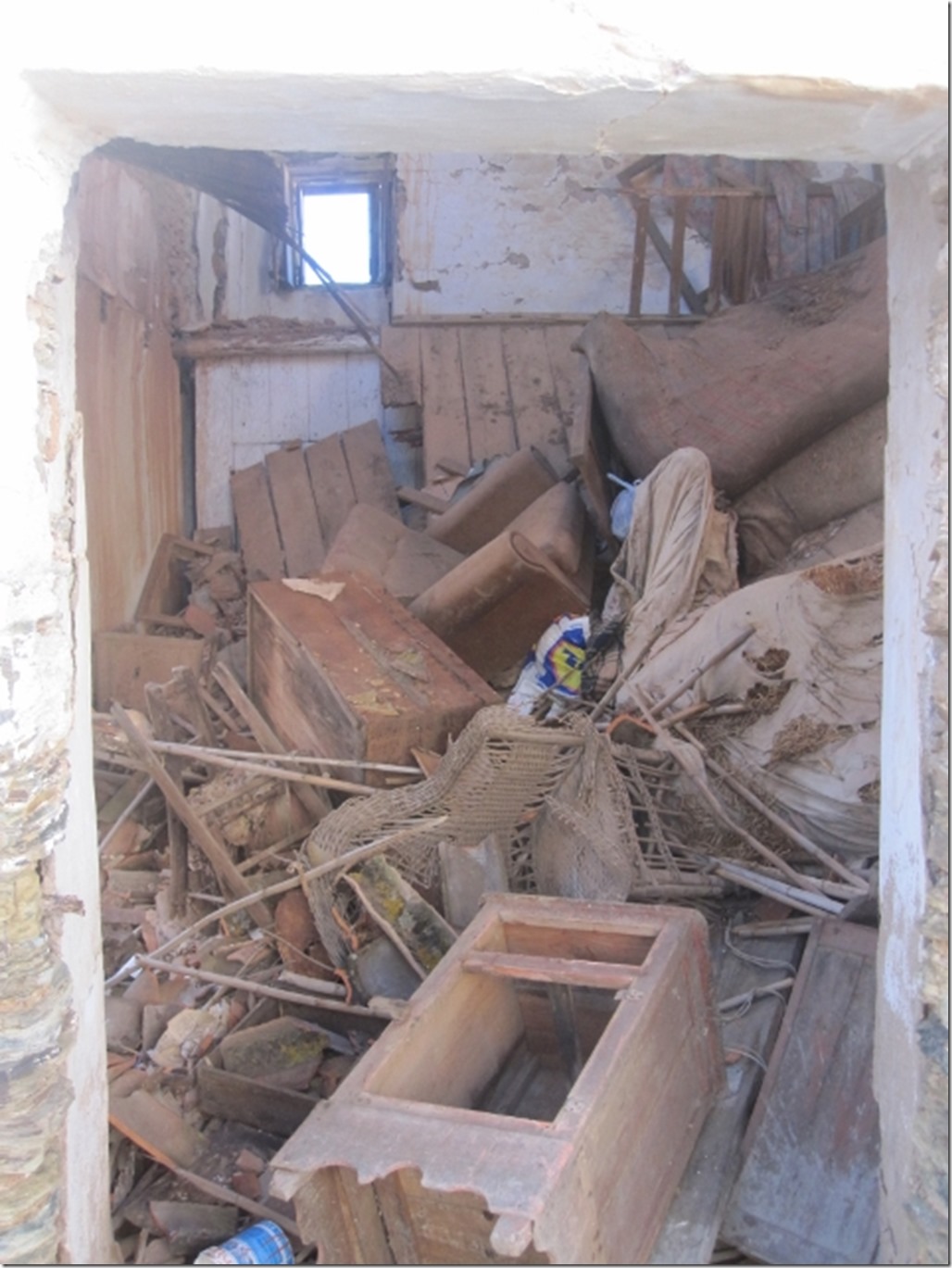
In one house we found a broken window. The house had just been left, a throwback from the 1950’s. Perhaps the occupant had died and no one wants it anymore so it is being left to rot.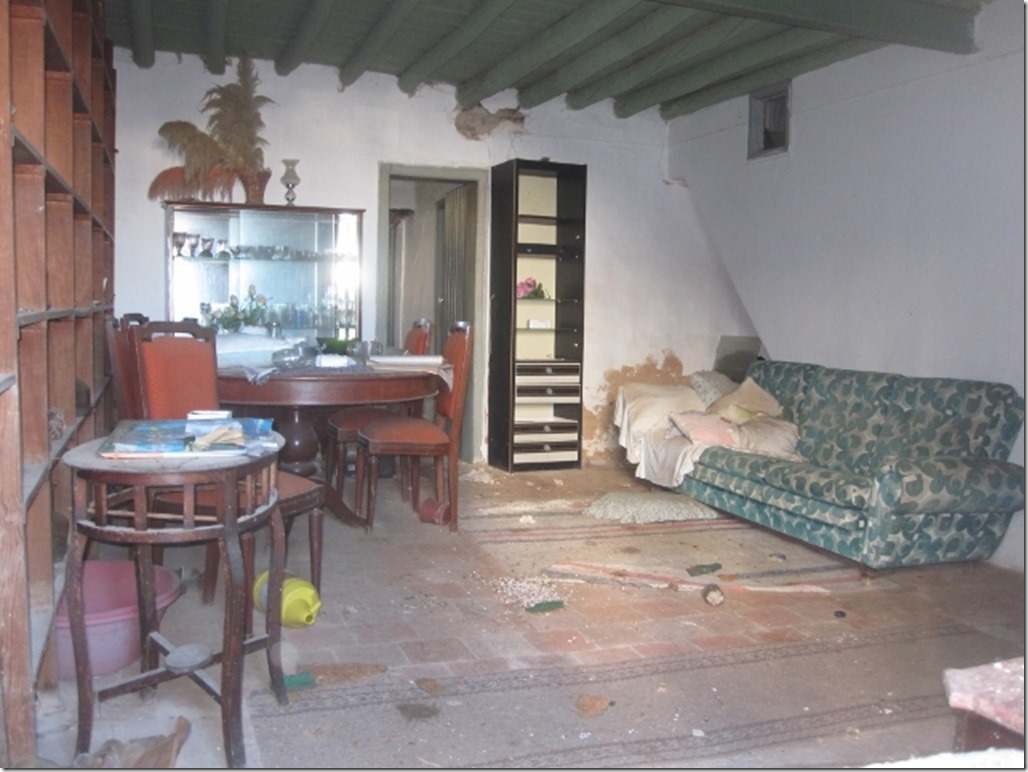
From the outside it is quite a grand and majestic building, just needing a lot of love.
And wherever you look, these derelict buildings are interspersed with ones that are inhabited.
Even the one opposite the main shop has been abandoned.
Are there any young people left here at all? Will the village just die along with the old people? A bit heavy!
Susana liked the plant pots.
The inhabitant of the village doing well, the packs of dogs that roamed the streets. They kept us awake that night with their incessant barking. It was an impressive chorus, starting one side of the village, and like a Mexican wave, gradually gravitating to the other….and then back again. It is difficult to ascertain why the Portuguese’s keep dogs, and their relationship with them. They seem to be a bit of a pest, an annoyance, but the villagers put up with them. Maybe when the village has died, and every last inhabitant is in the grave, what will be left is packs of dogs scavenging the landscape.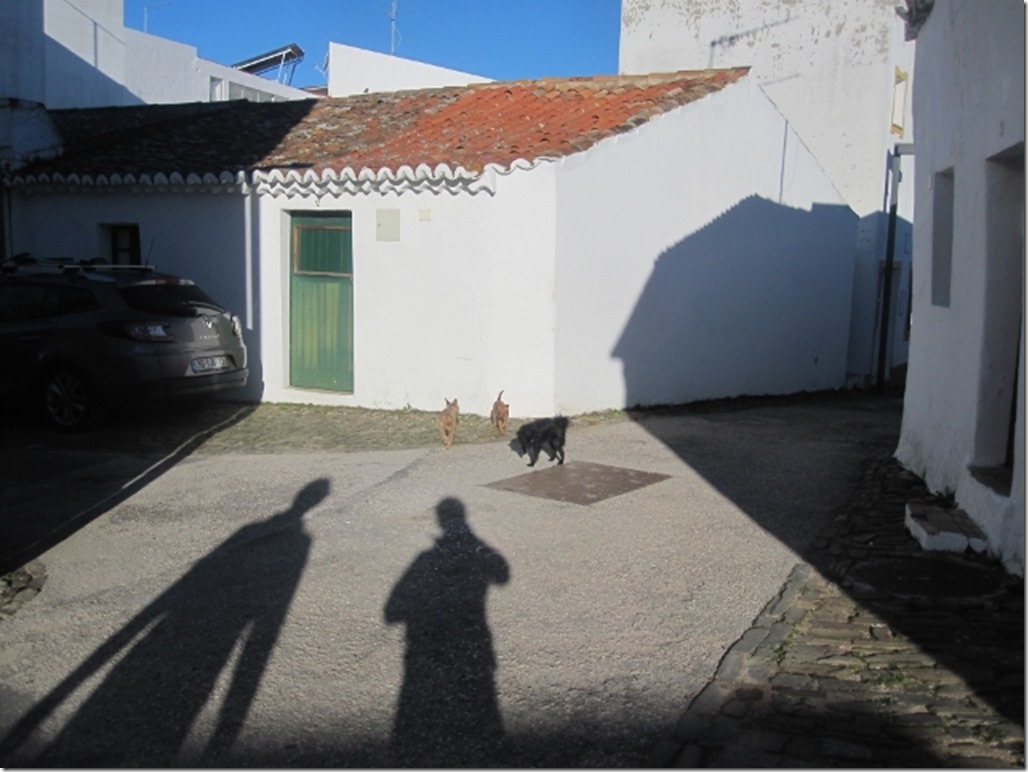
The next day, we headed to an even more remote area. One that had only just been connected with civilisation with a paved road. We wondered why. The guide made the point that this was funded with EU money. So what is the significance of that then?
It was less than ten kilometres to the village . But the German cash had obviously been limited. The road was potholed and rutted. Dora’s speed was limited to 20kph. We passed several other villages before pulling into Mealha. The first task, to refill Dora with water. We were directed to a well where an old woman was collecting her drinking water.
Adjacent to the well, the launderette. It is important to remember this is in the centre of Europe that has been part of the EU for more than 20 years, and just 30 kilometres away, on the coast of the Algarve all the facilities expected by the international tourist. Is it a wonder that the young are fleeing these areas? Some people have a romantic idea about this lifestyle. The honesty of living off the land. We have seen old ladies, weeding, ploughing and planting, presumable to ensure they can eat. This is hard labour, there is nothing romantic about it.
This is not a museum, the detergent is newly opened. The ‘washing machines’ are clean. I think we will wait until we can find a launderette that takes money!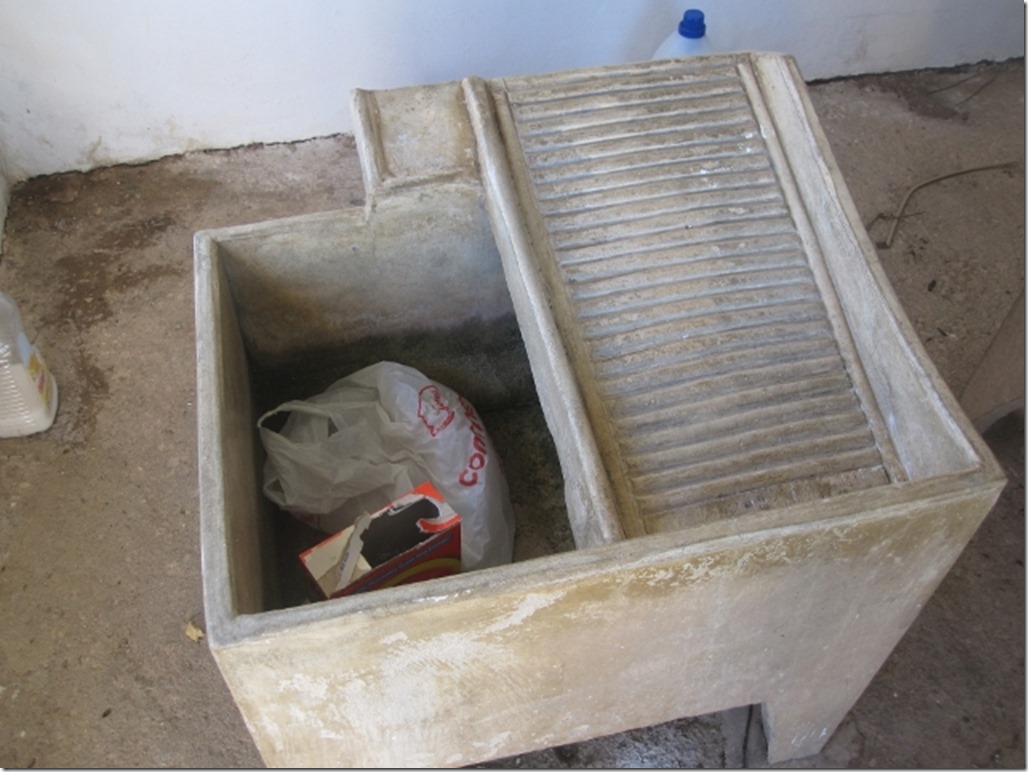
So how would Susana cope with the harsh life?
Perfectly, we soon had our drinking water replenished from the well. You may well ask why I did not put muscle to the handle. Well I believe it is important to follow the traditions of the areas that you visit. It appears that it is the women that do all the hard work in Portugal, so it would be disrespectful not to adhere to this![]() .
.
Water replenished. Dora resting on the outskirts of the village, we set off for our first walk of the day, leaving the quaint village behind us.
The village is famous for these little circular structures, that are in various states of disrepair. Apparently, they have been used for storage and even to live in.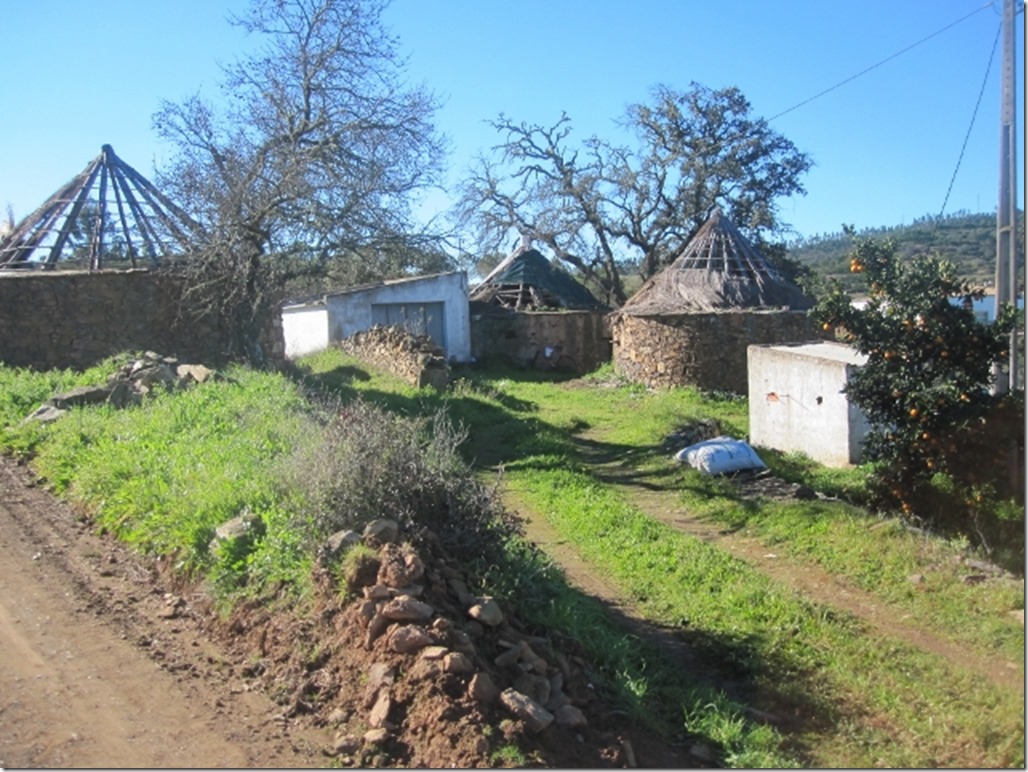
This was another walk from our guide, but one that was well marked. This was a good thing as the arrows soon deviated from the vague description in the book, as we headed up to the right along a shallow ridge.
Our first objective of the day. A stone age burial chamber, over 5000 years old (or 4000 if you believe the book!) Not quite as impressive as Stonehenge, but then I have never been that impressed by old stuff. The alignment of those stones just ain’t modernist enough for my liking, and I prefer a darker shade of grey!
So far the marking are good, and easy to follow as we head into the eucalyptus trees. Need to find out where these trees are originally from. I think they are not endemic to the region, and however lovely they are, they just don’t feel right.
Julie, author of the guide, wrote about the beauty of the rhododendron bushes on a previous walk. I was surprised of her love of these veracious plants, weeds that infect a landscape, blotting out light so that no other plant can survive. They were bought to the UK from Asia, loved by some because of their blooms, but most environmentalists would want them eradicated in favour of endemic species, this they are attempting to do on Lundy Island.
We are told that various grains are being grown for market around here. We see no sign of them. Maybe, now they have a new road they buy the grain from Lidl like we do, progress.
A nice surprise, we come across this abandoned shepherds’ huts, not mentioned in the guide.
If ever there was a need for a good bit od description for a route, which typically our guide is mute on.
Somewhere here is a turning off to the right. We didn’t believe it either. But the sign clearly says go right, although there is no evidence of a path.
Surely you don’t expect us to go down that. Hand me a machete and I will start hacking!
Sure enough that is the path, and we spend the next ten minutes wading through bushes along one of these terraces. It was quite a change from the normal track. Looking at Google earth, we could have stayed on the track, they both led to the same place.
This is what we are more used to. We refer to these as tracks, but in reality they are unpaved roads. This is the sort of thing that would have connected Mealha before the EU grant came its way. We know it is a road because occasionally we come across road signs.
Now I am not sure that paving the road has made a big difference to the inhabitants of Mealha or the other villages along its route. I could be wrong, but the ‘Well lets not go to Cachopo then, we can go next week when the road is passable’. I am not sure it has stopped the young people leaving the village, I am not sure it has led to the influx of people wanting to set up businesses in the village, hotels for tourism, or even a bed and breakfast. I am not even sure that the road will slow the villages demise.
The road did allow us to visit it though. I am not sure how the village benefitted. There was no shop where we could buy an ‘I’ve been to Mealha’ sticker or tee shirt. In fact we just took. Took some water, and wore a little bit of the the already potholed tarmac of their EU funded road.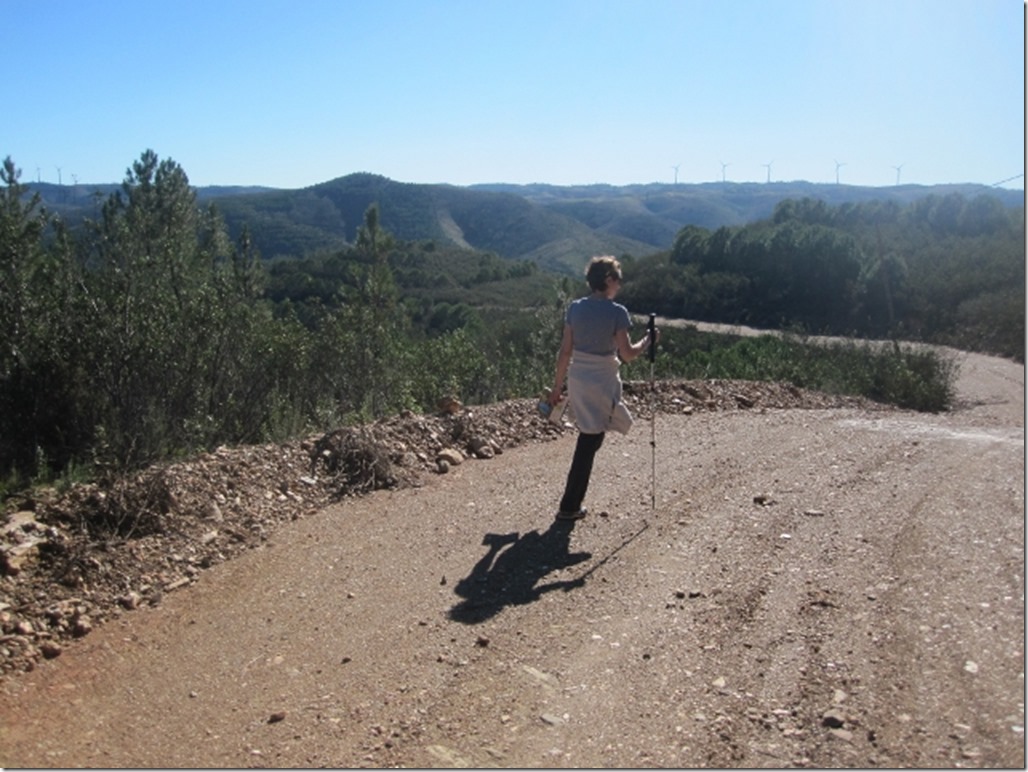
The road descended down to the river.
It is a beautiful, cloud free day. With both London and Guisando below freezing, we are very fortunate to be in tee shirt weather.
We did not cross the river. My approach to crossing rivers is currently under scrutiny. SEE BLOG.
Another abandoned structure, this time an old watermill.
Beautiful stonework, probably not particularly air tight or with a great insulative capacity. Not up to modern standard me thinks!
And on the return we find another overgrown terrace to fight our way through.
And the other thing we find, bees. I love bees. I would like a bee hive.
This ones seem healthy, and hopefully not infected by any mite or pesticide.
Until eventually we return to the village.
A 9.4km walk in two and a half hours. Sunday, the day of our lord. No day off for walkers though, just taking it a bit easier.
In the afternoon, another walk, in the opposite direction, more towards the North.
We set off back through the village
Like Guisando, there are plots of land, allotments, interspersed with the houses.
We headed around the edge of the village and alongside the river.
And loads more of those circular storage buildings, in slightly better repair.
And nice paths, for once.
It is isolated, but fairly manicured with terraces and strict lines of pine trees.
More stepping stones carefully negotiated by Susu.
Herbs like rosemary, maybe with dinner tonight.
Another broken down windmill, yawn.
More stone age burial places, sign.
This time with pretty daisies in between.
If ever I wanted a burial place it might be with that view!
That was the destination of this walk and we were soon, on the return. Before long and the village came back into focus.
And back across the river, a little further up.
We were told this should have taken 2 hours, we did the 5km in just under one.
In no time at all, we were back at Dora, and off to our next place, Casas Baixas.
GDR

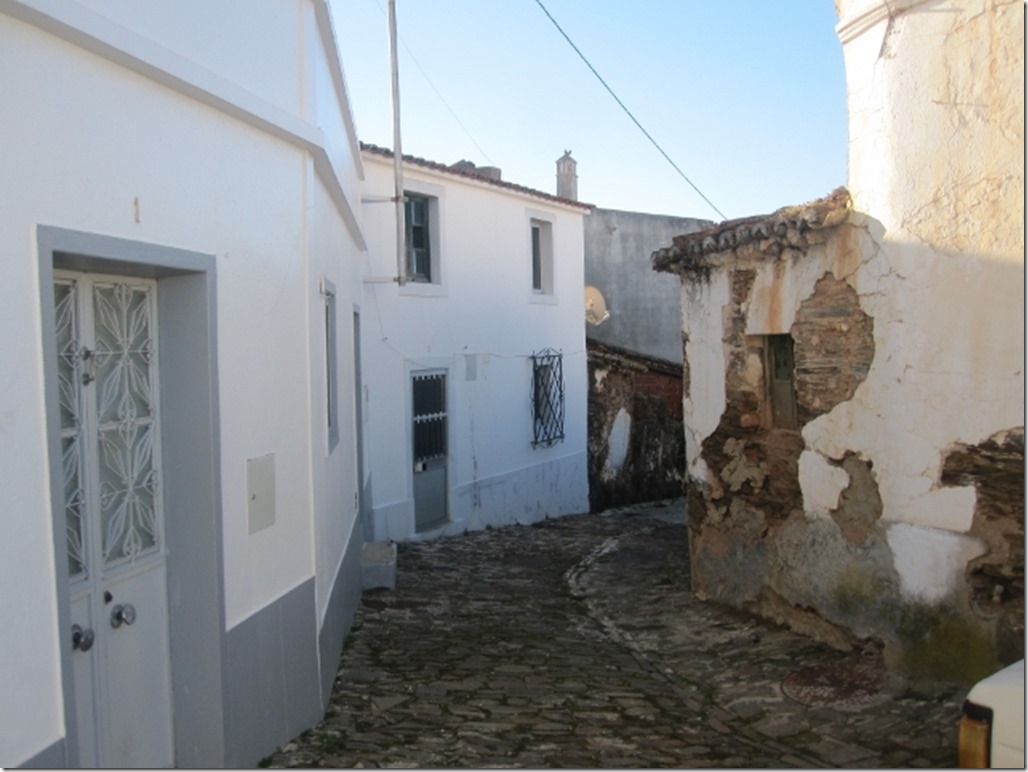
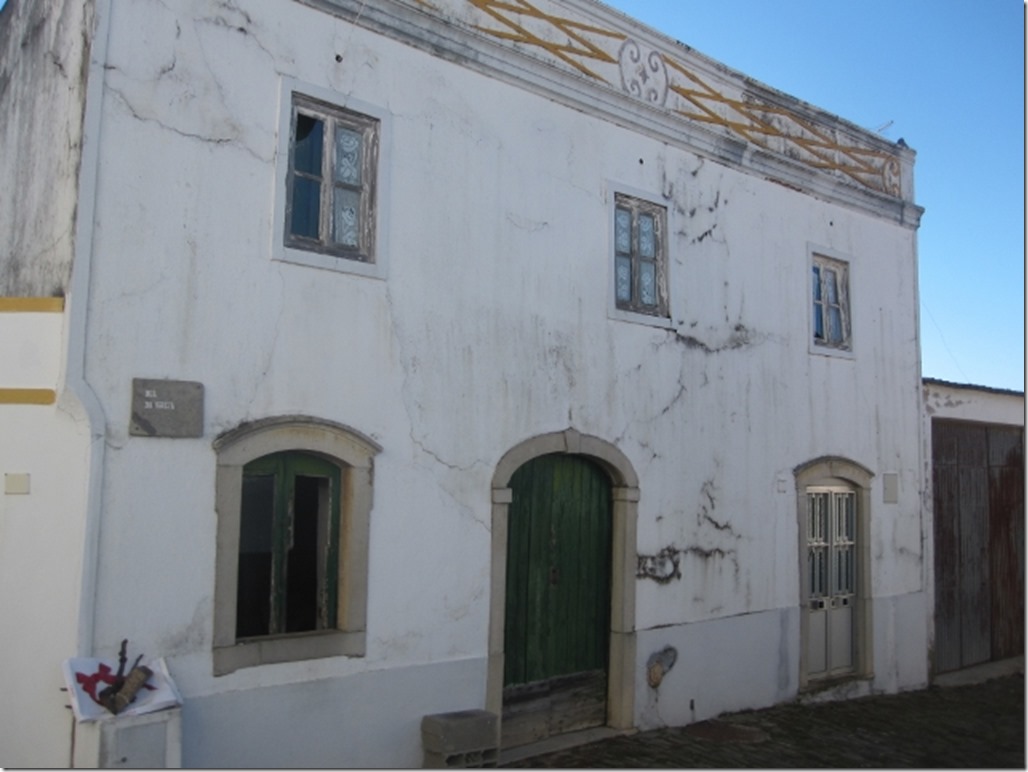
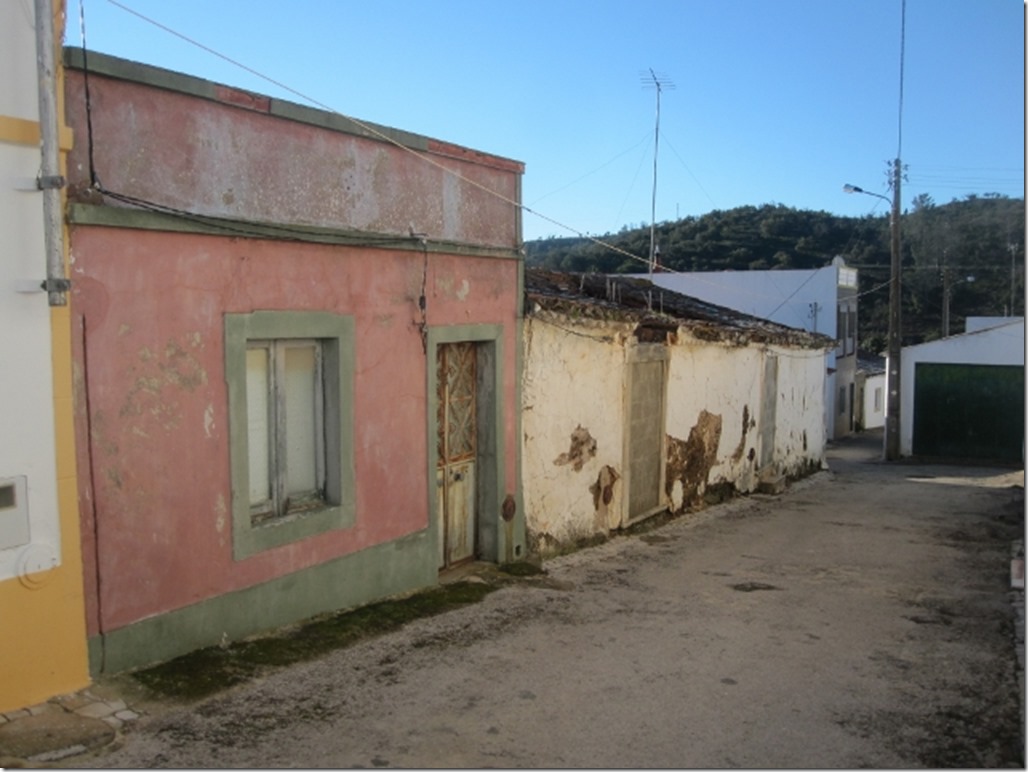
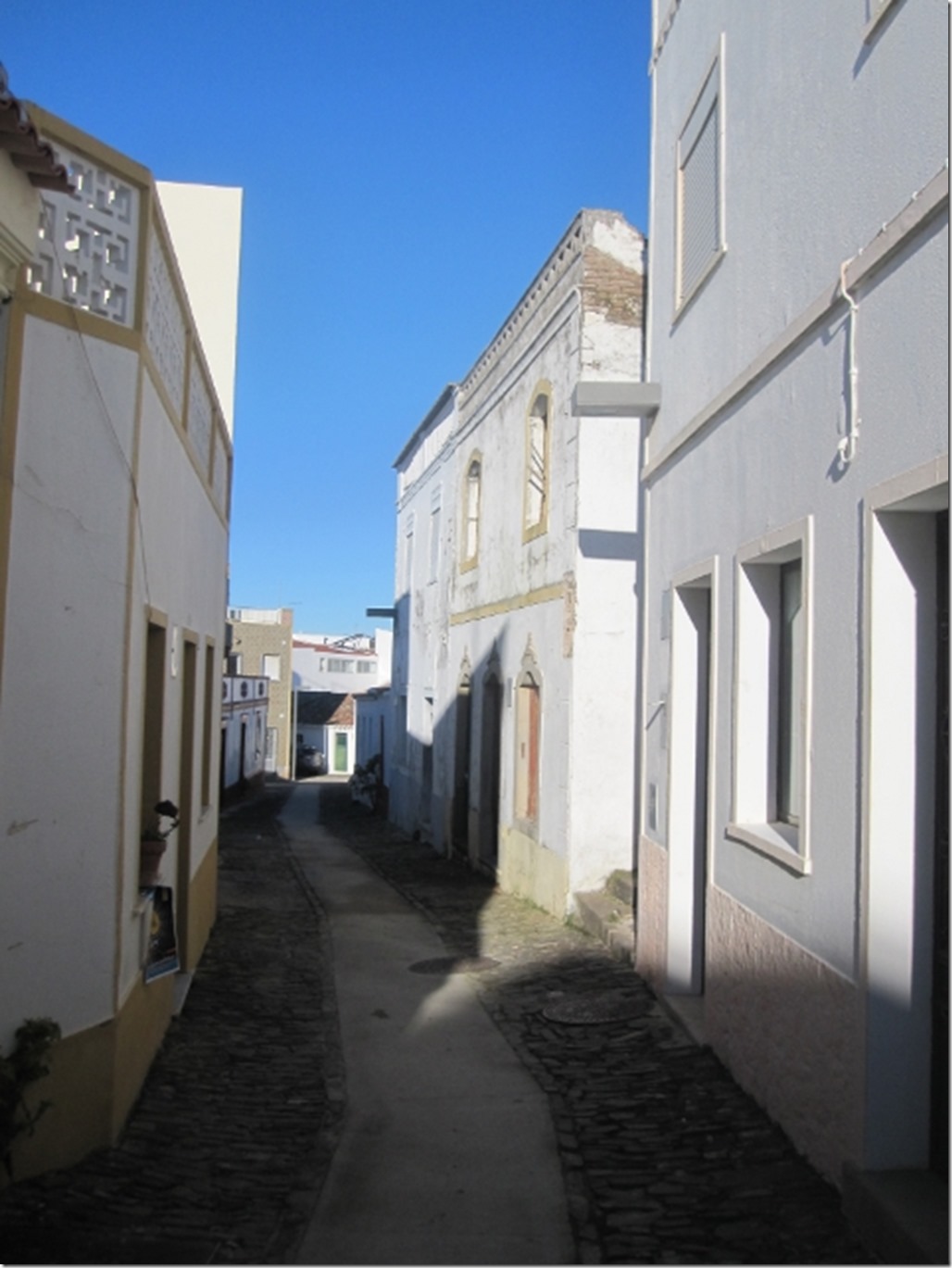
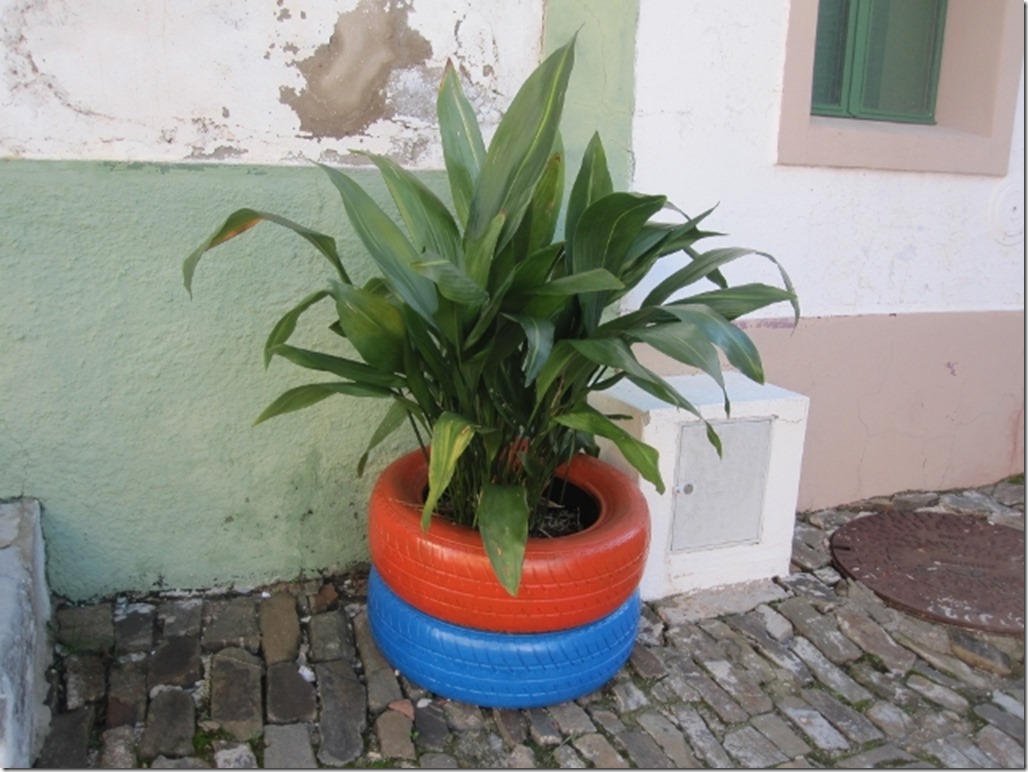
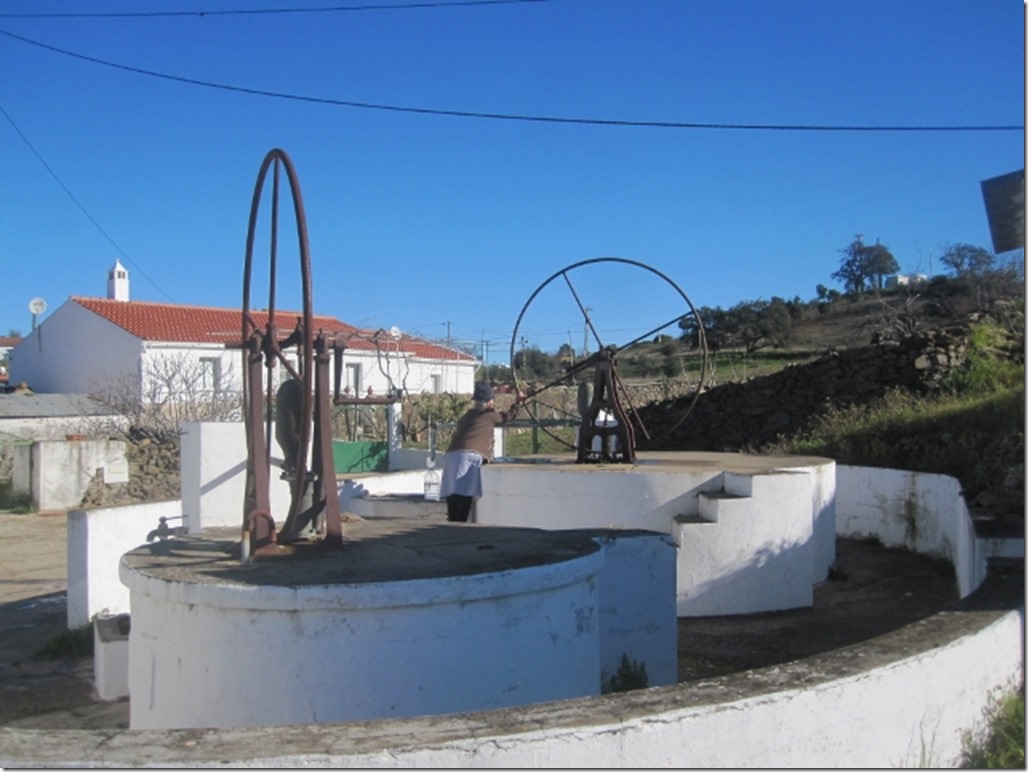
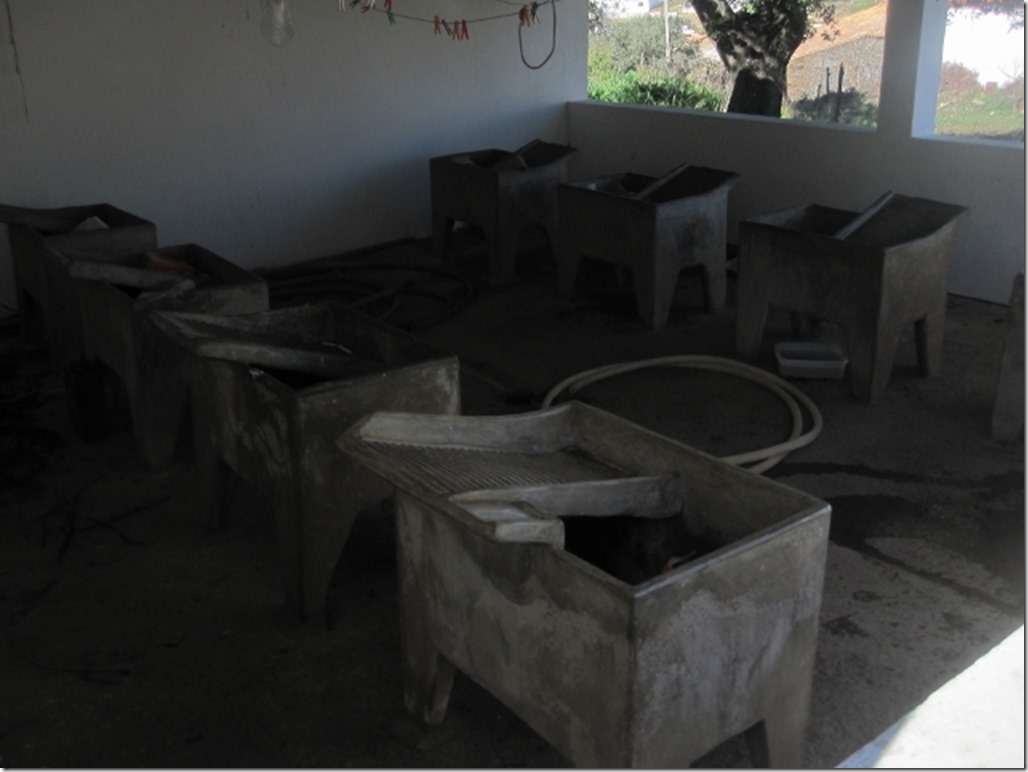
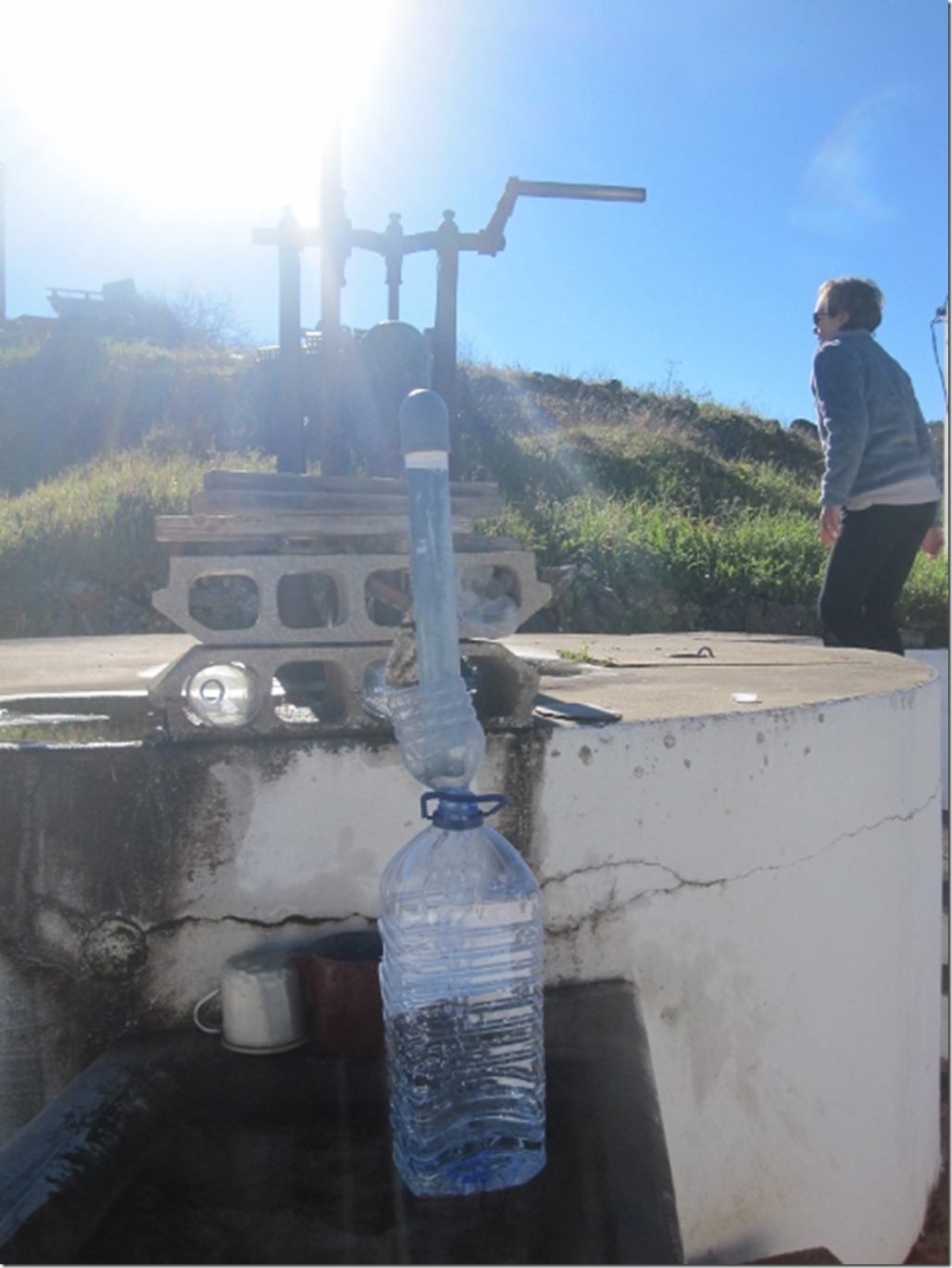
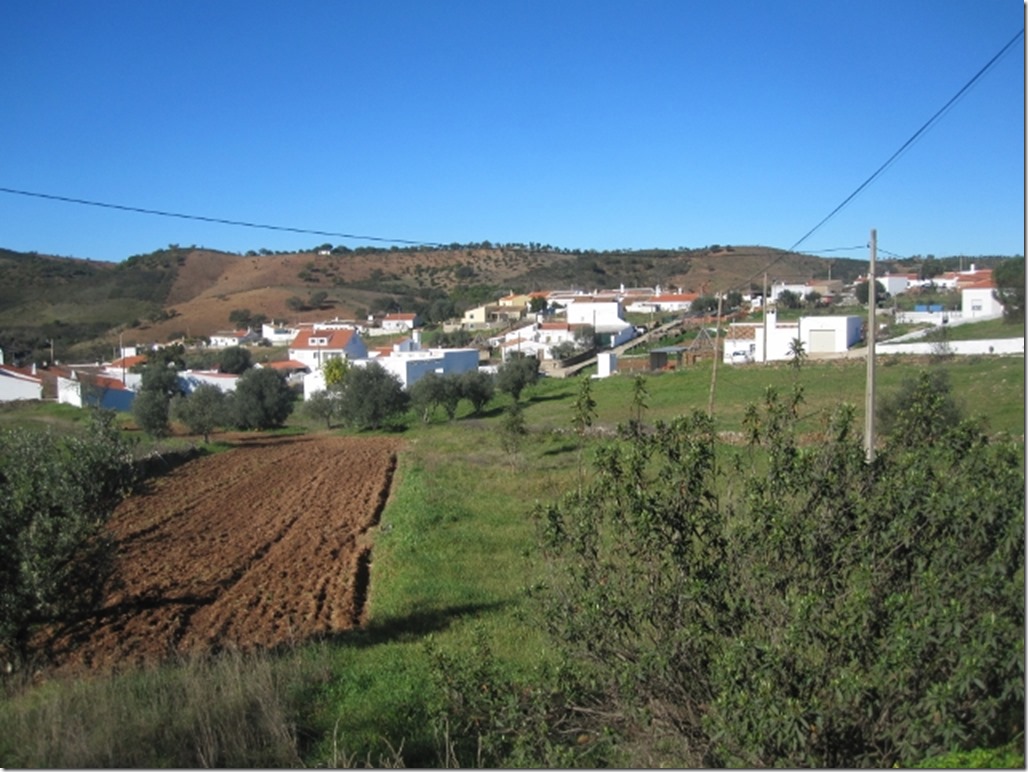
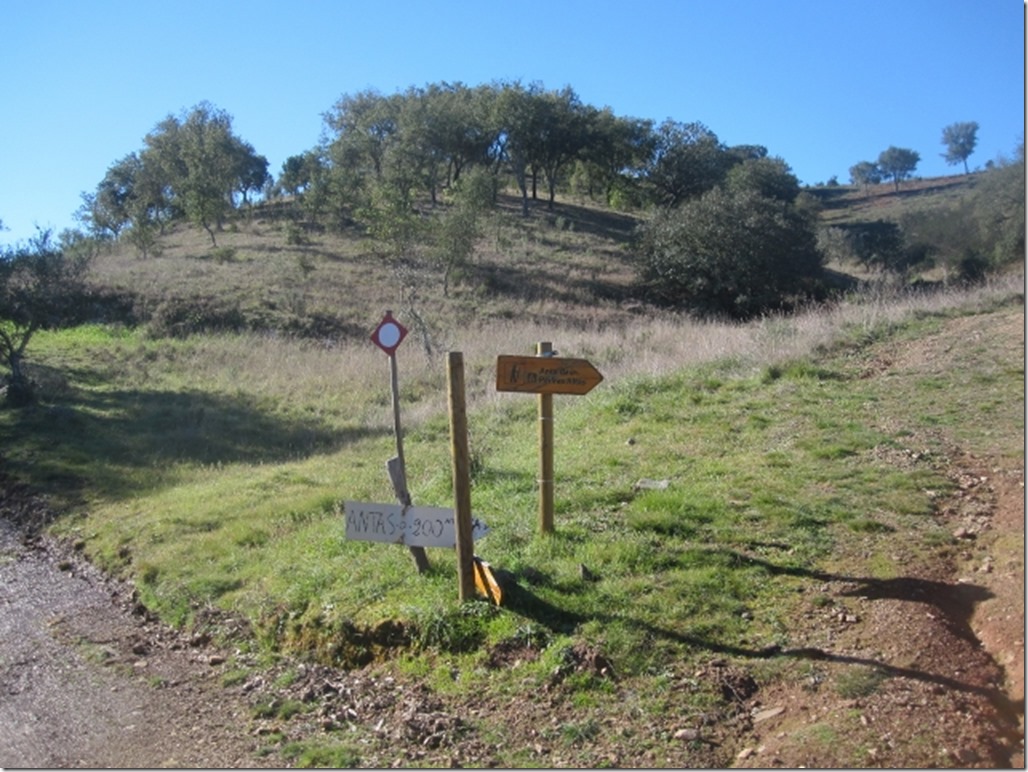
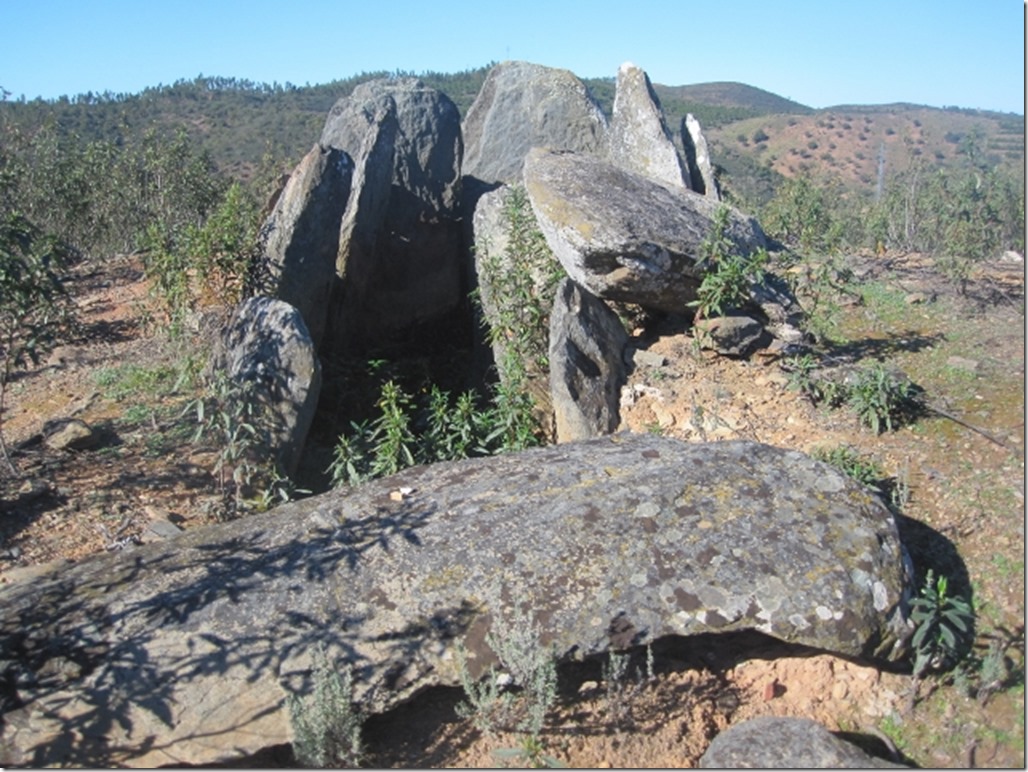
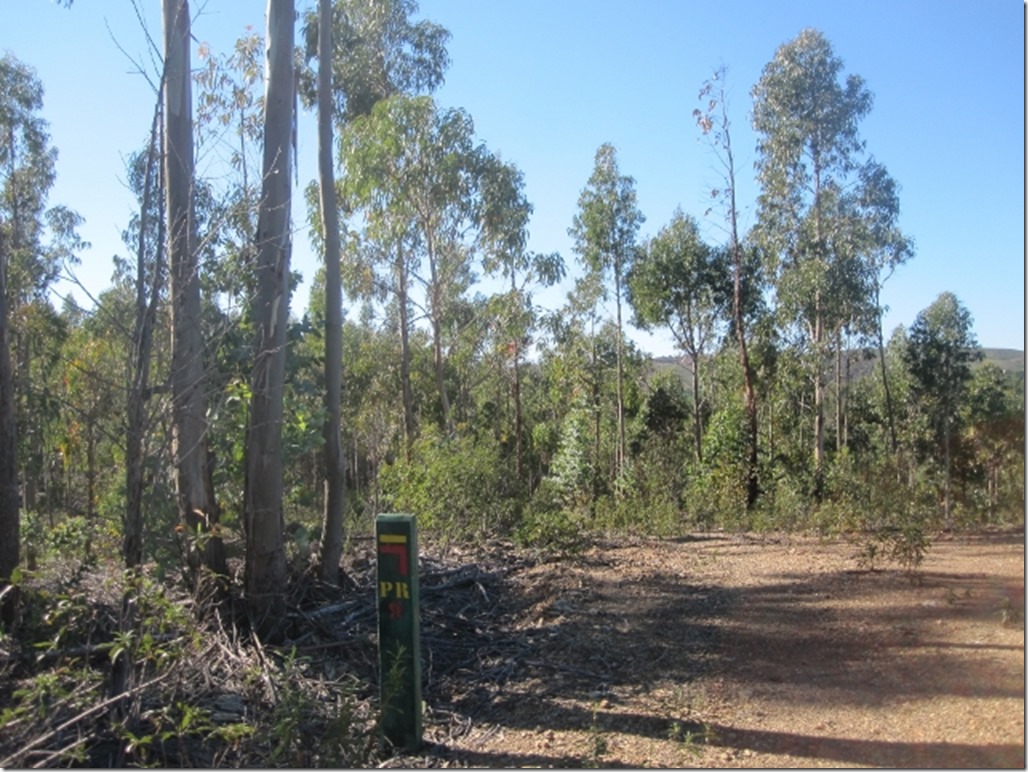
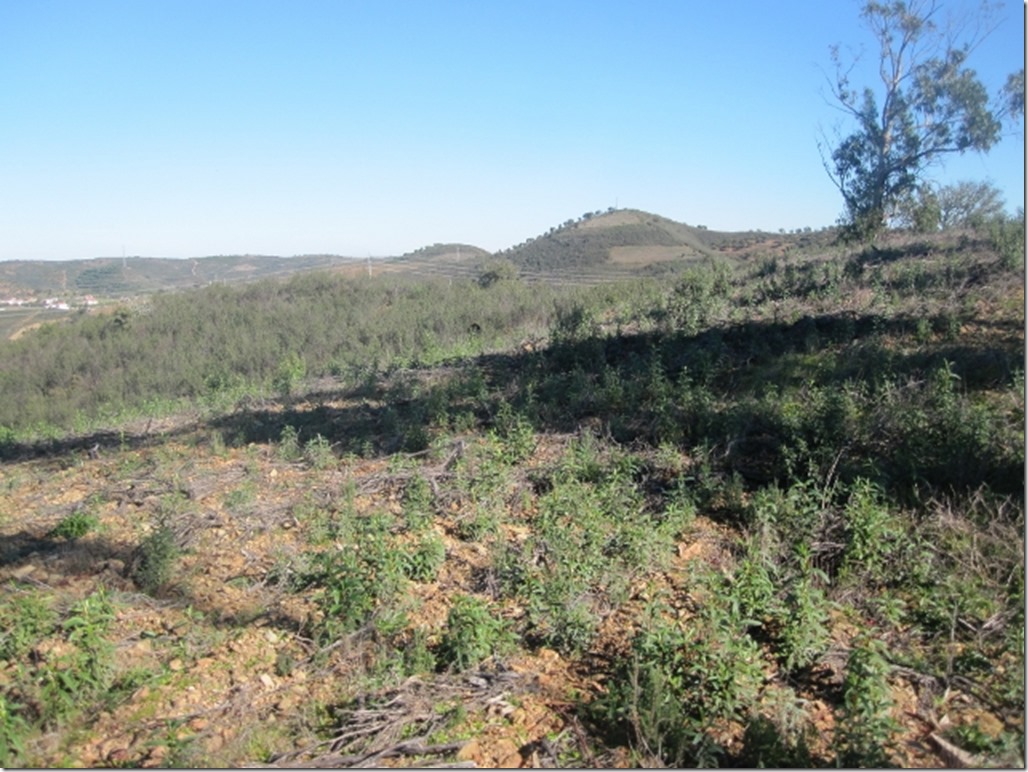
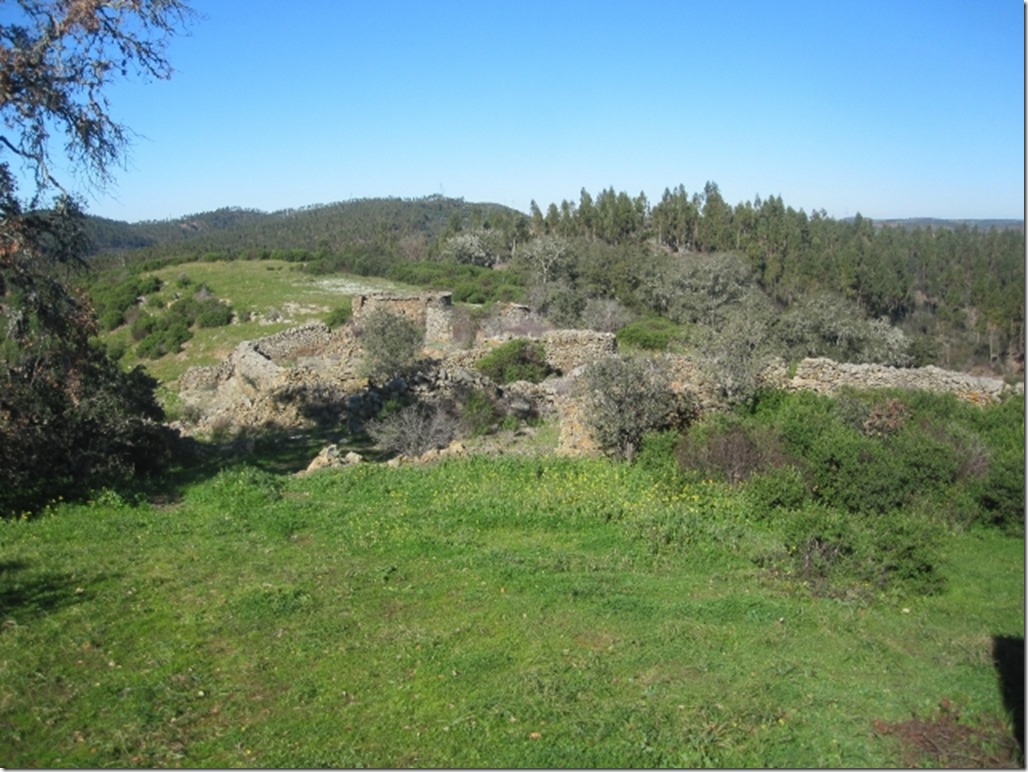
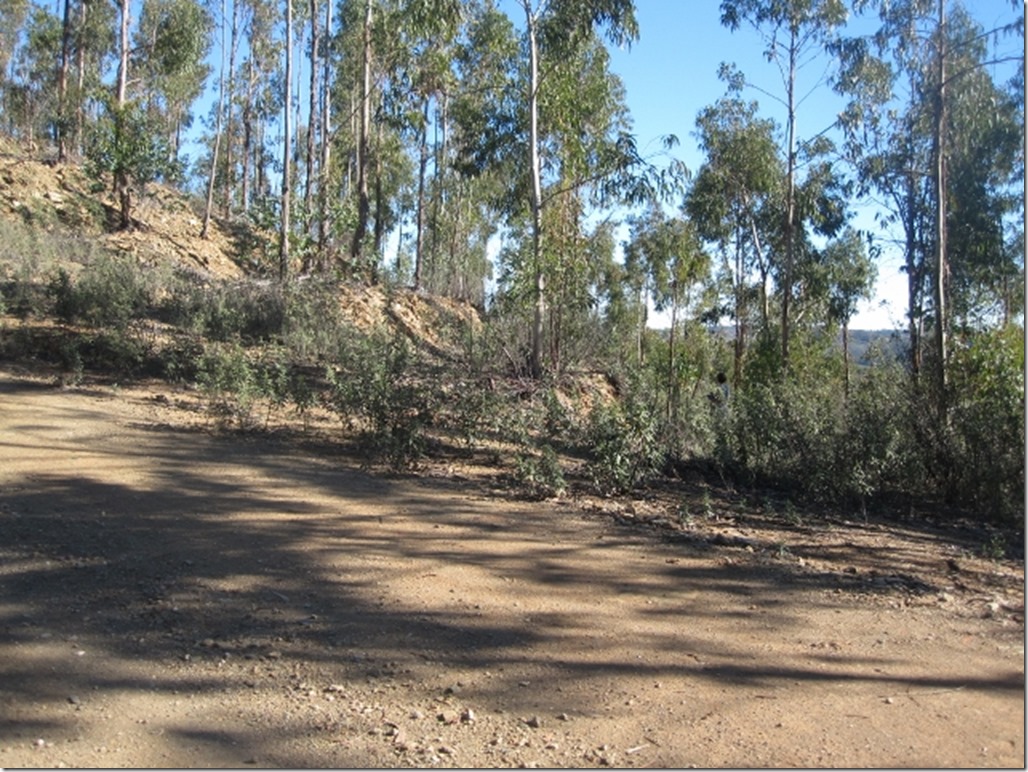
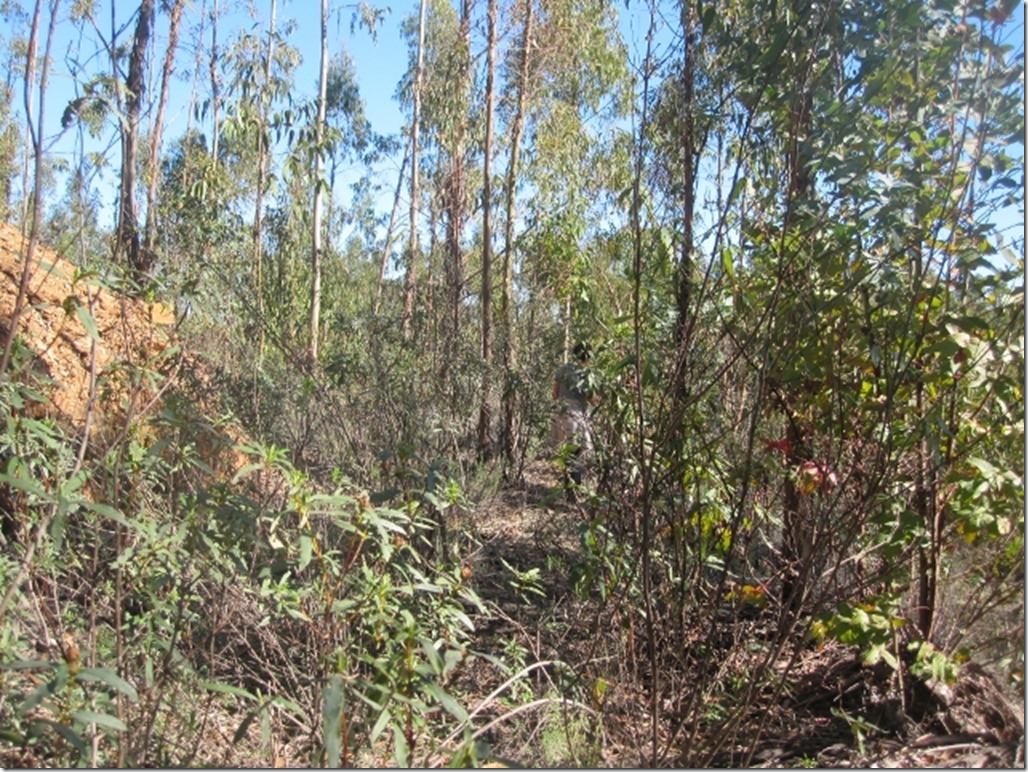
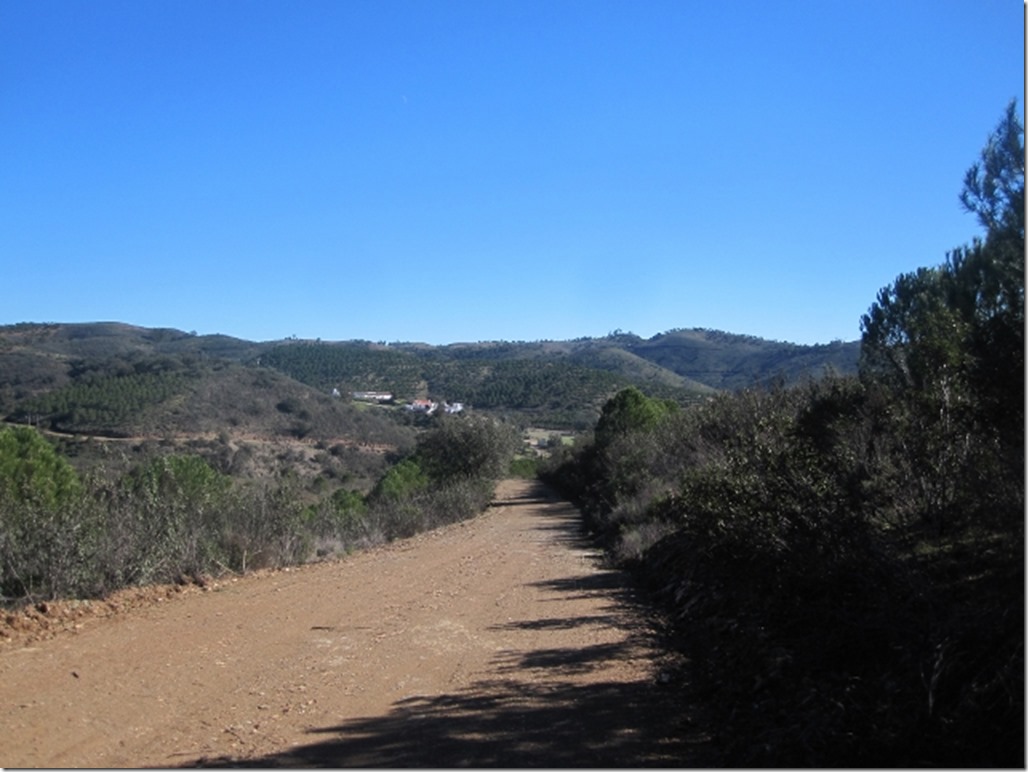
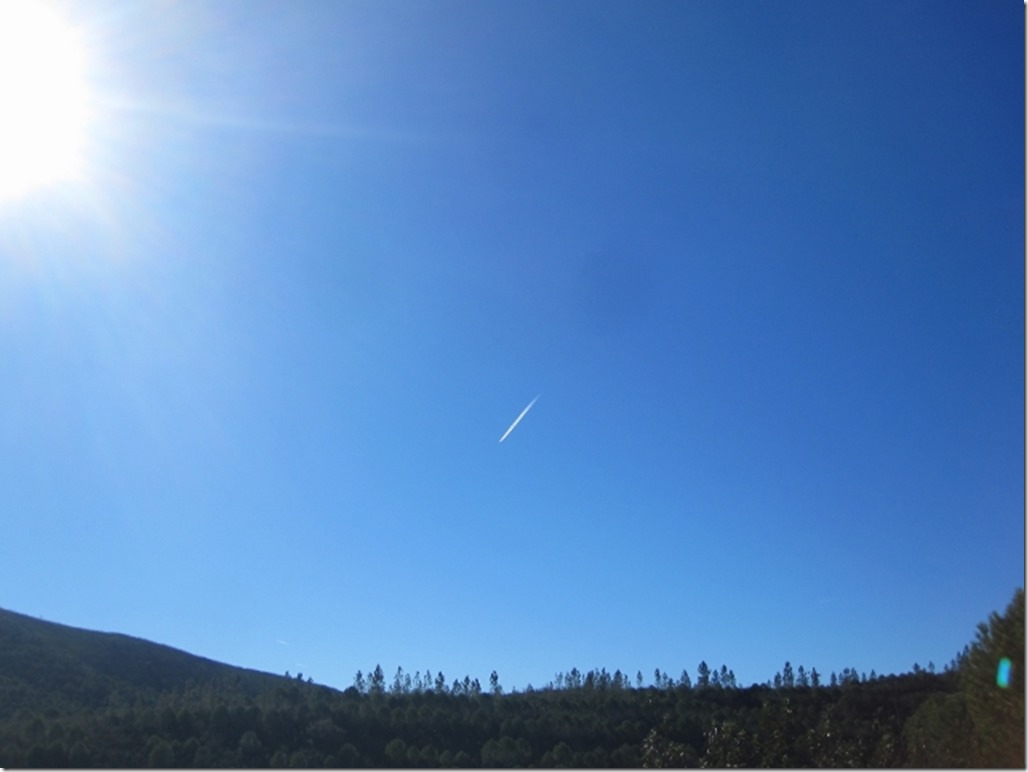
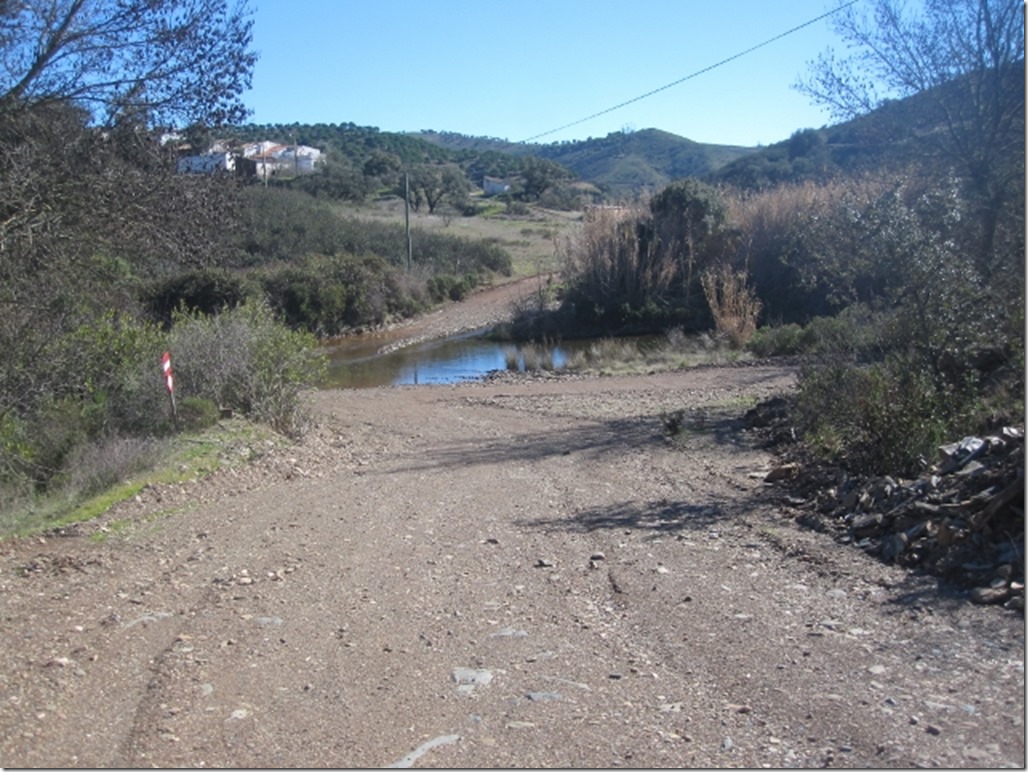
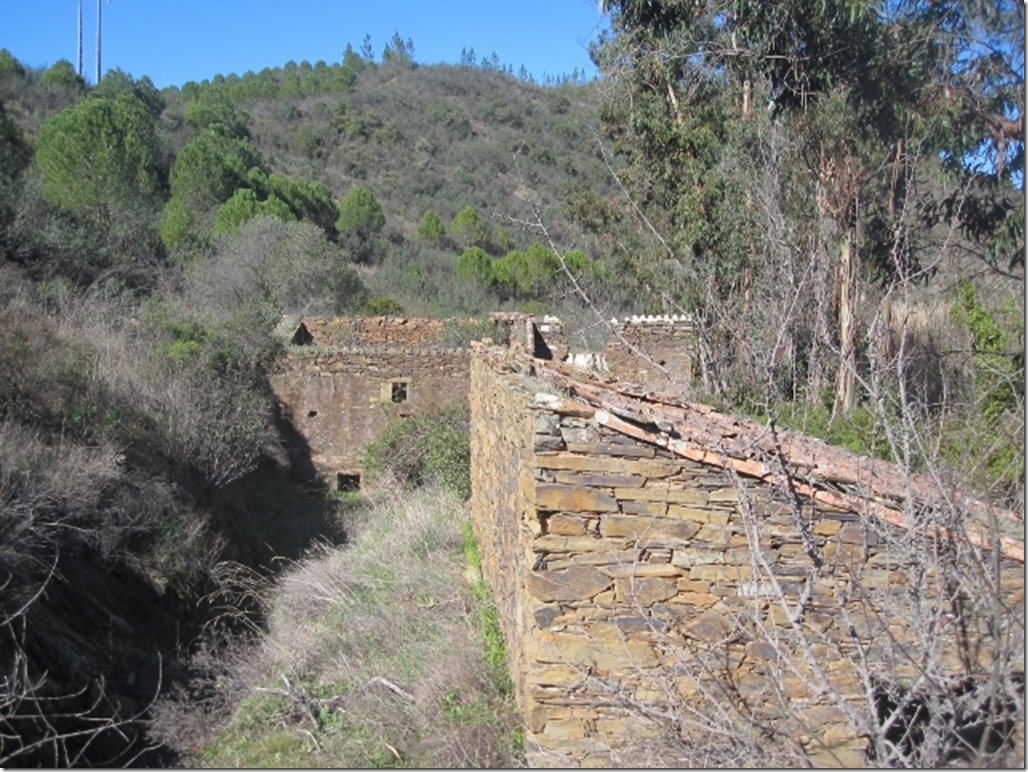
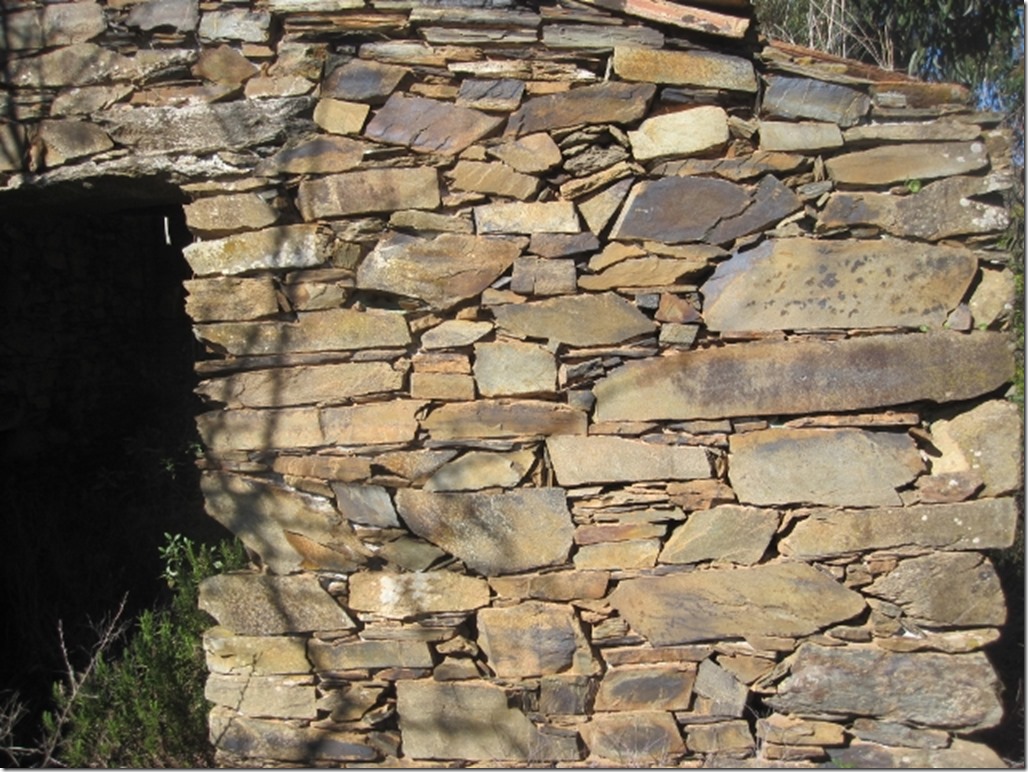
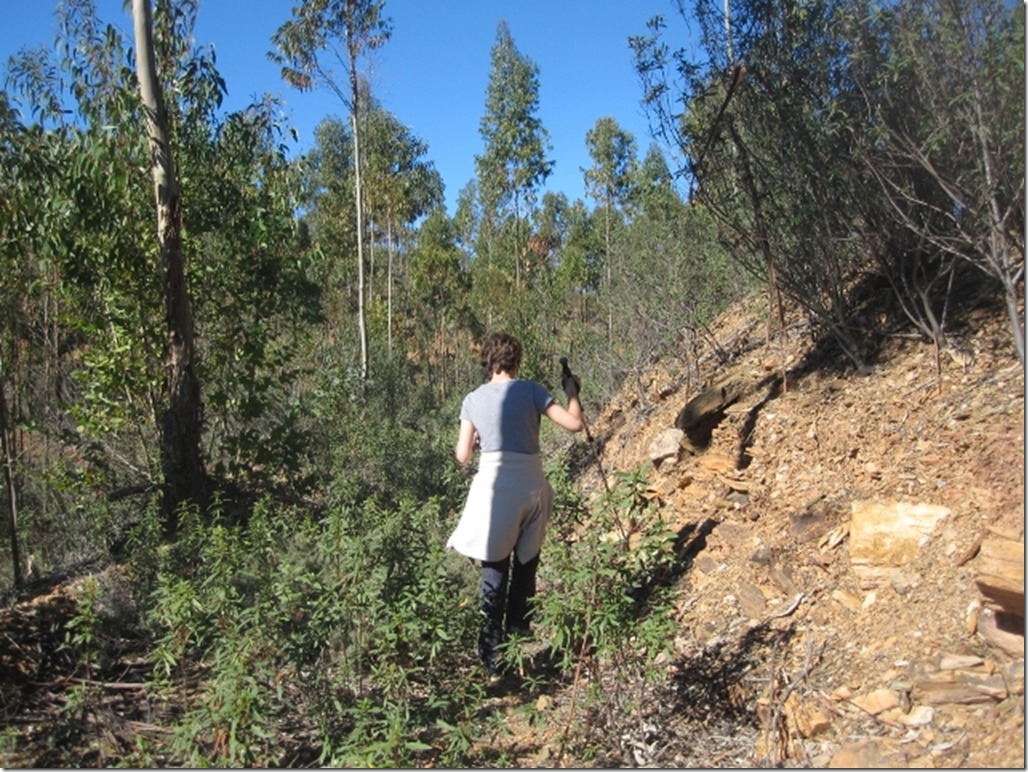
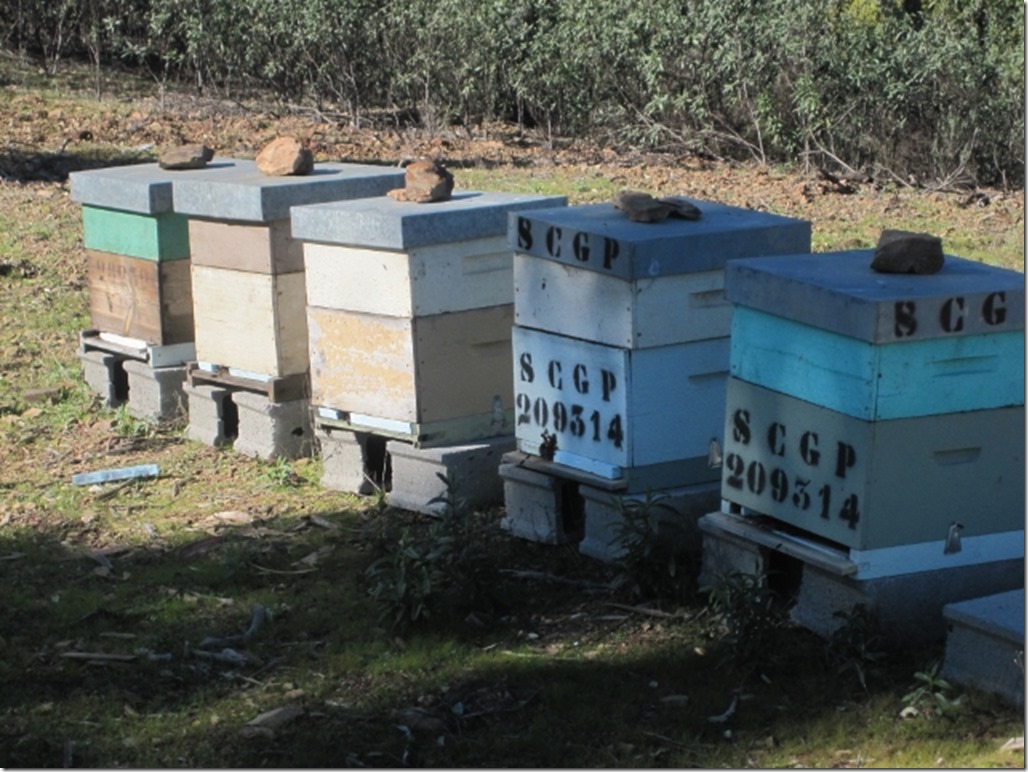
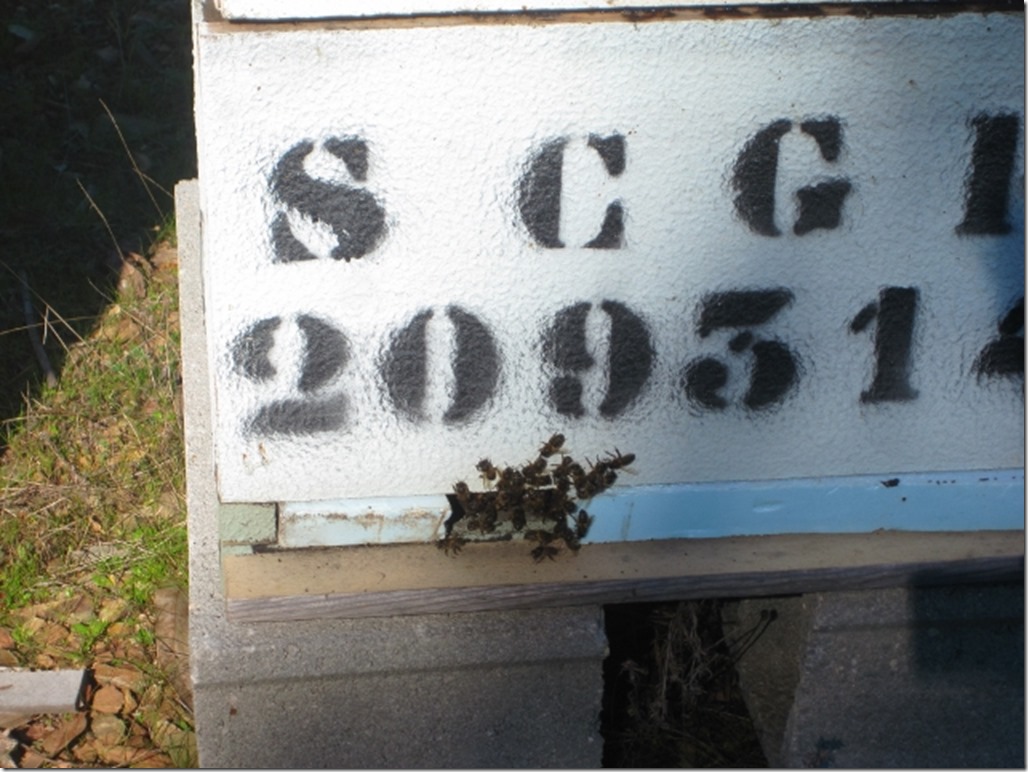
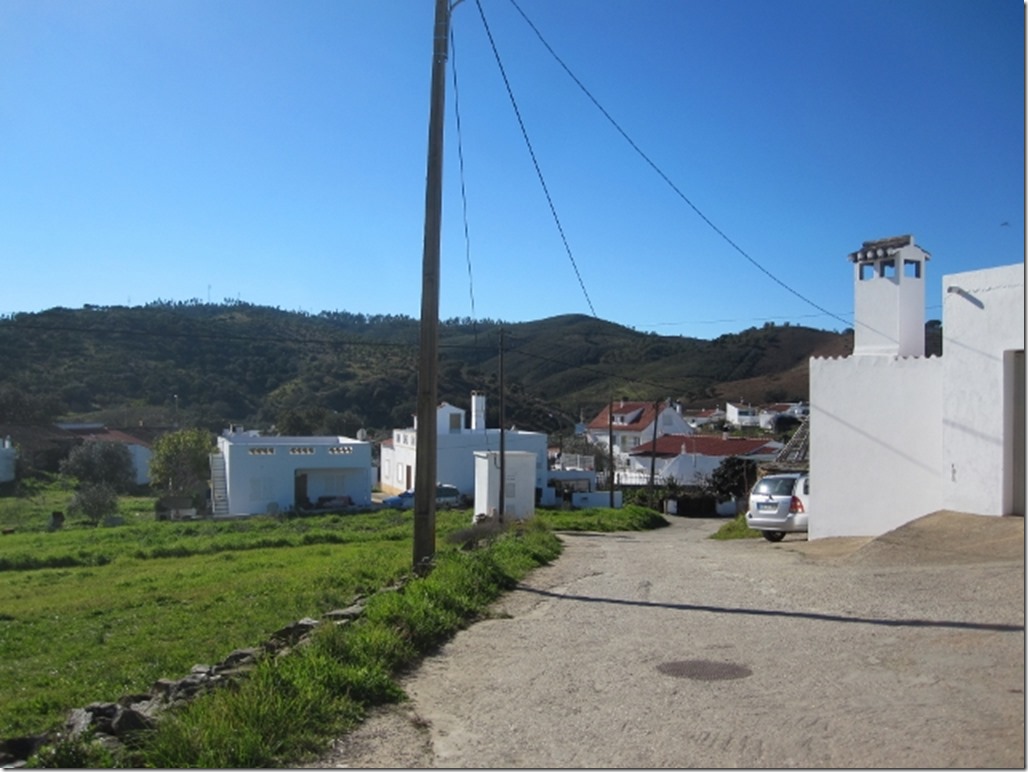
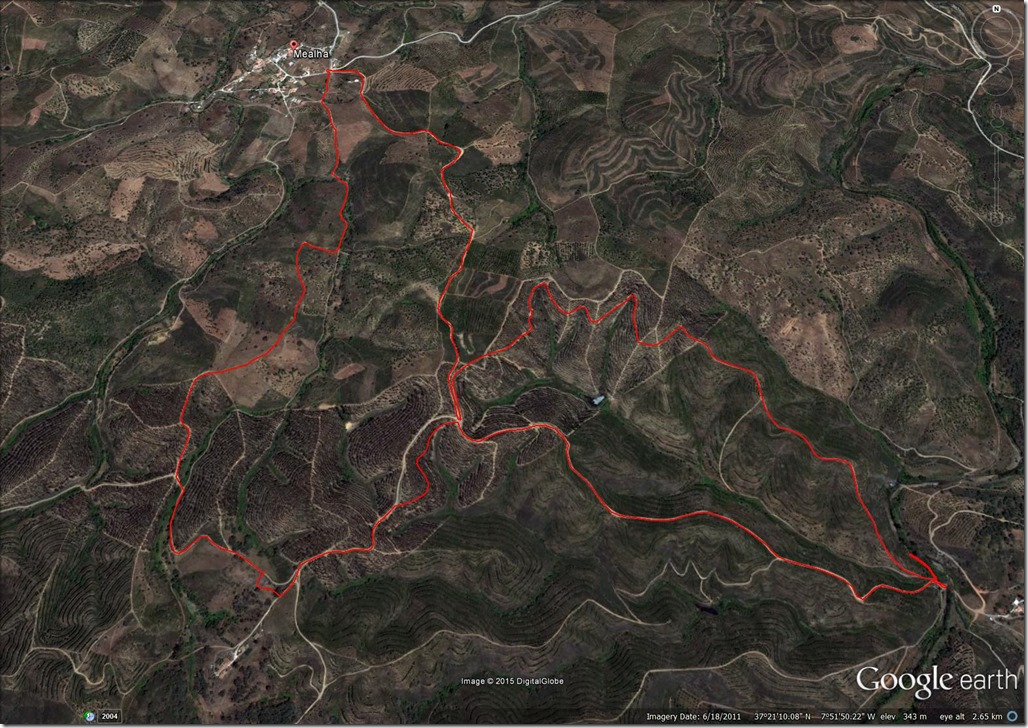
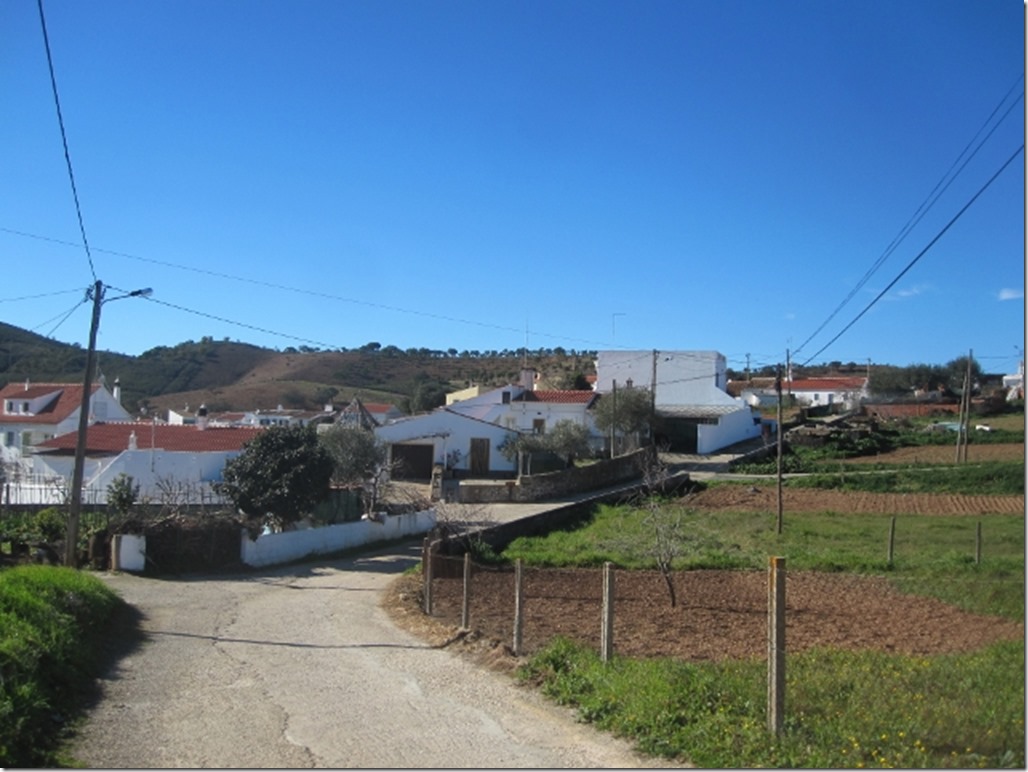
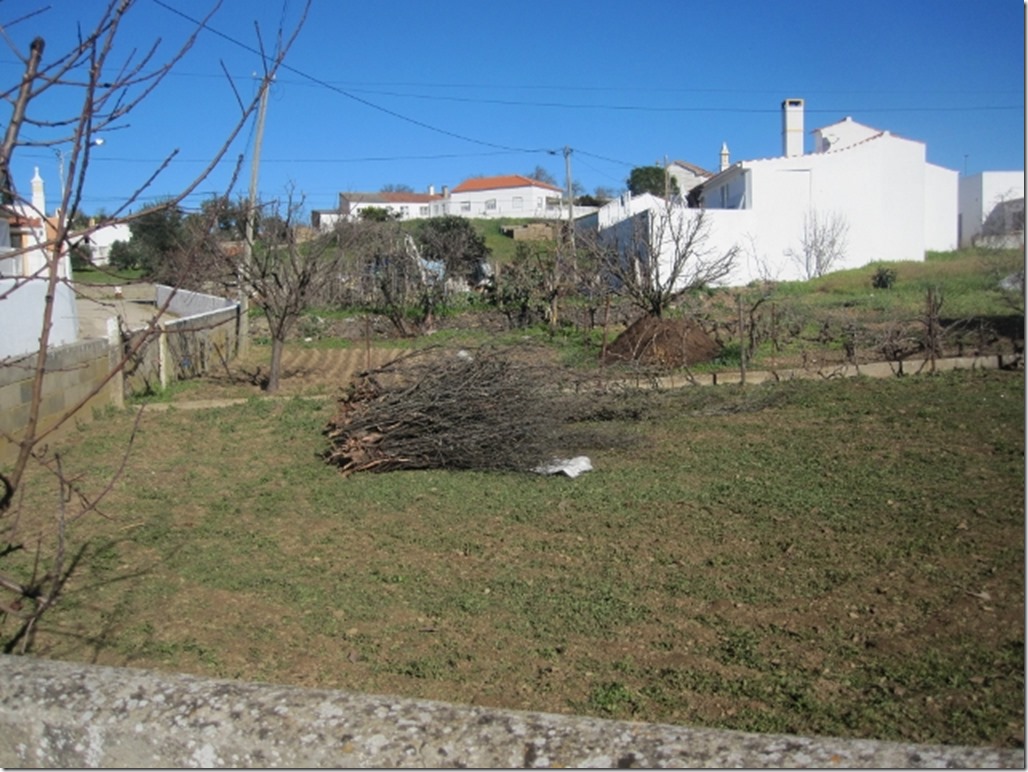
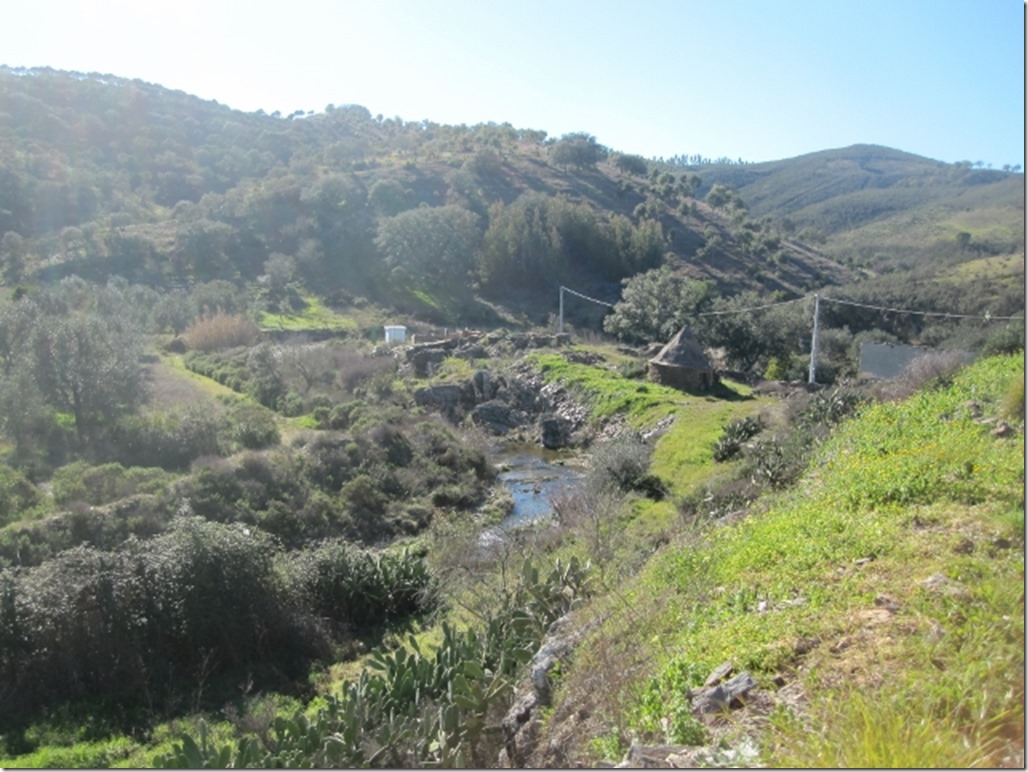
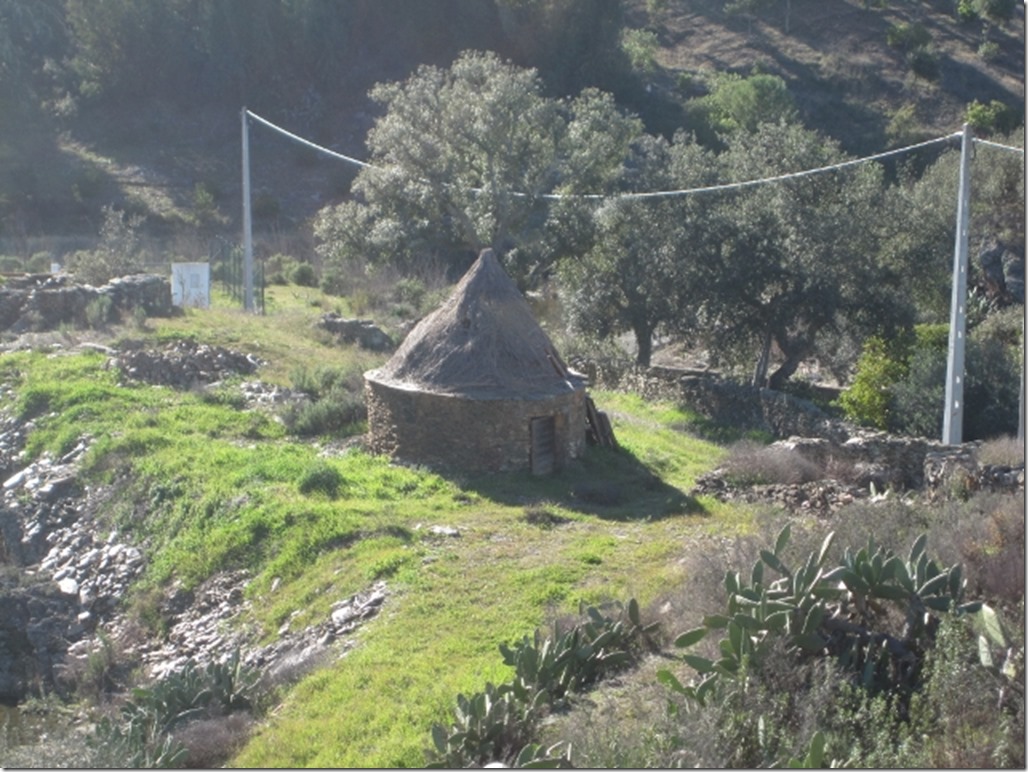
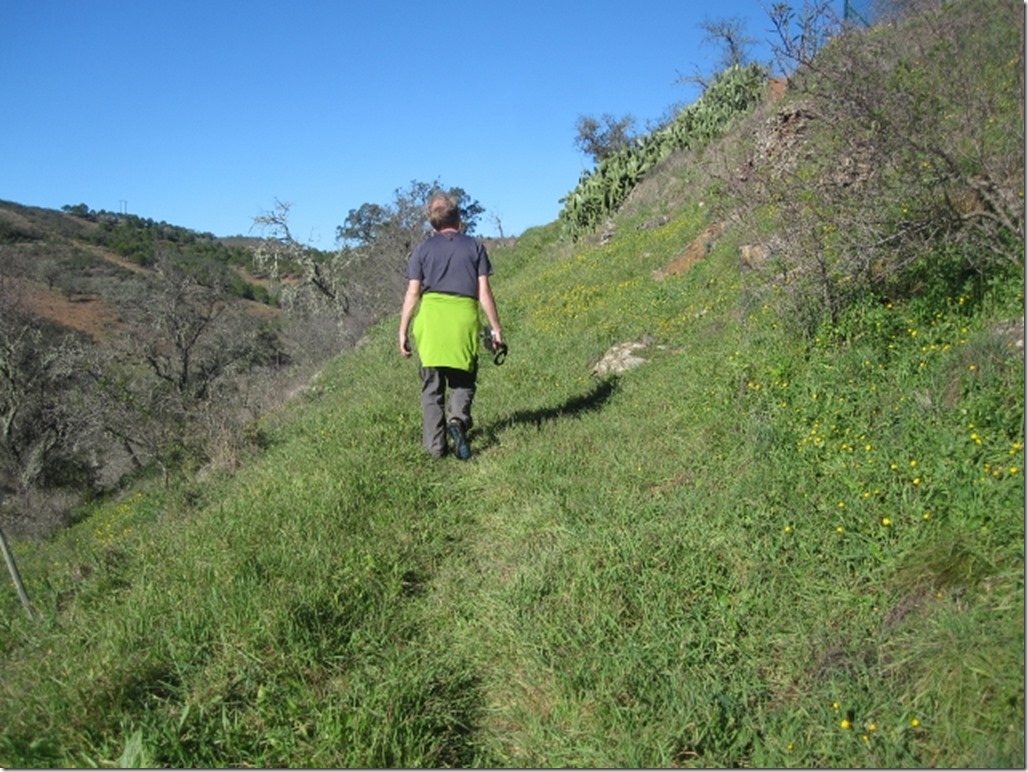
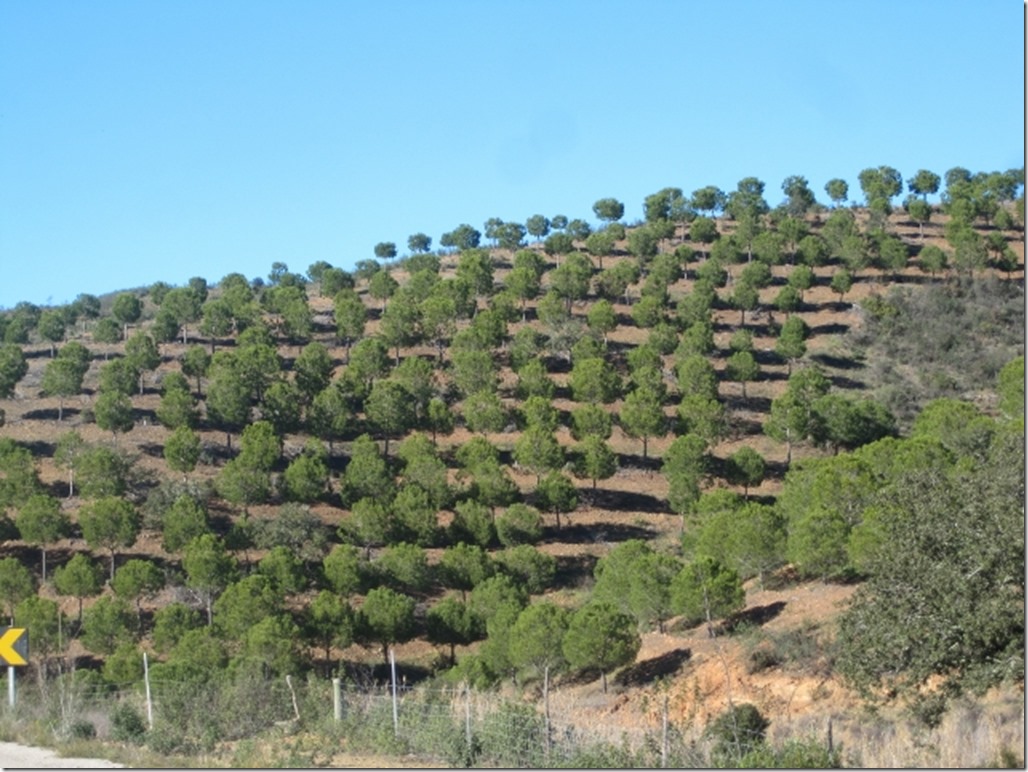
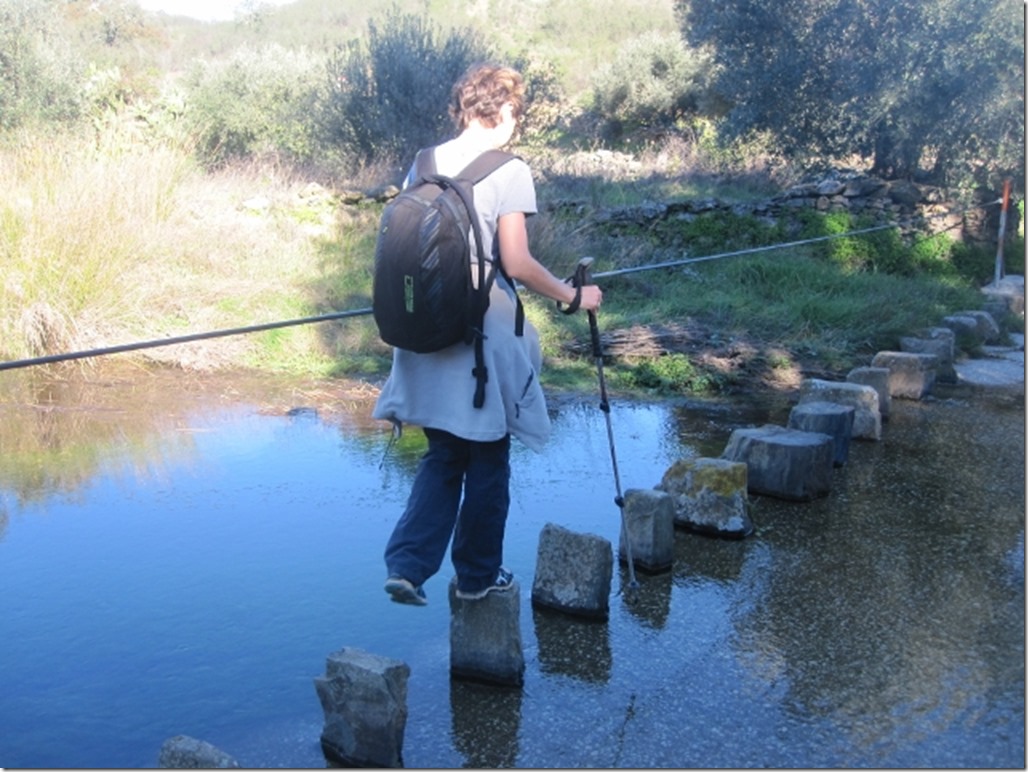
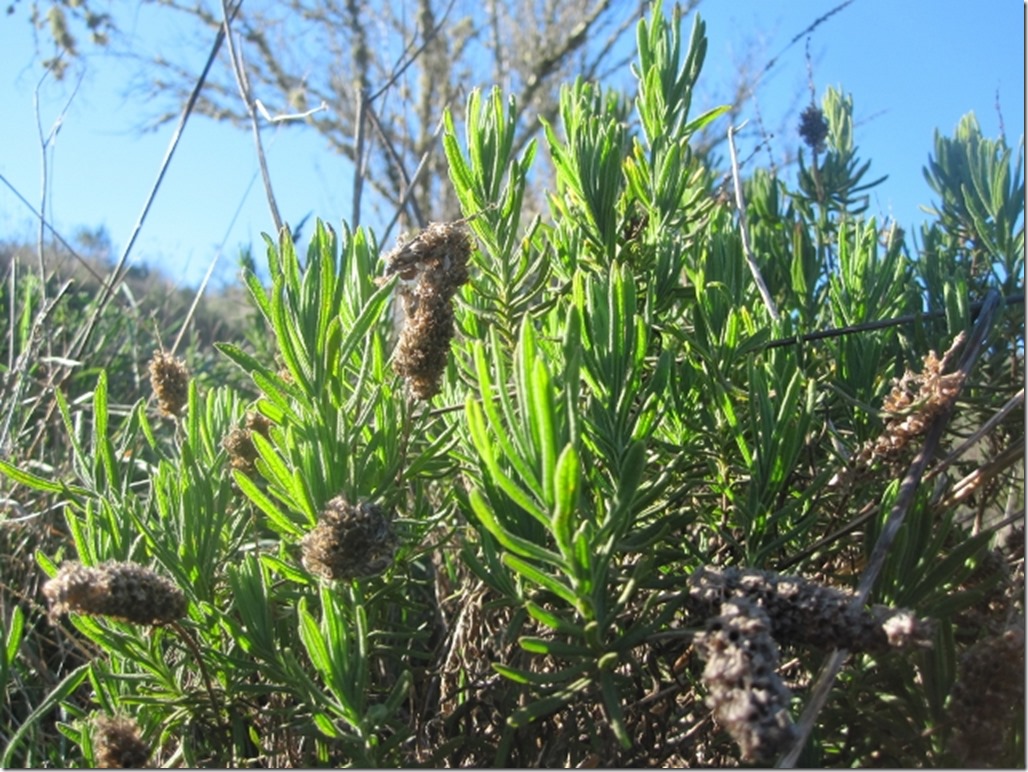
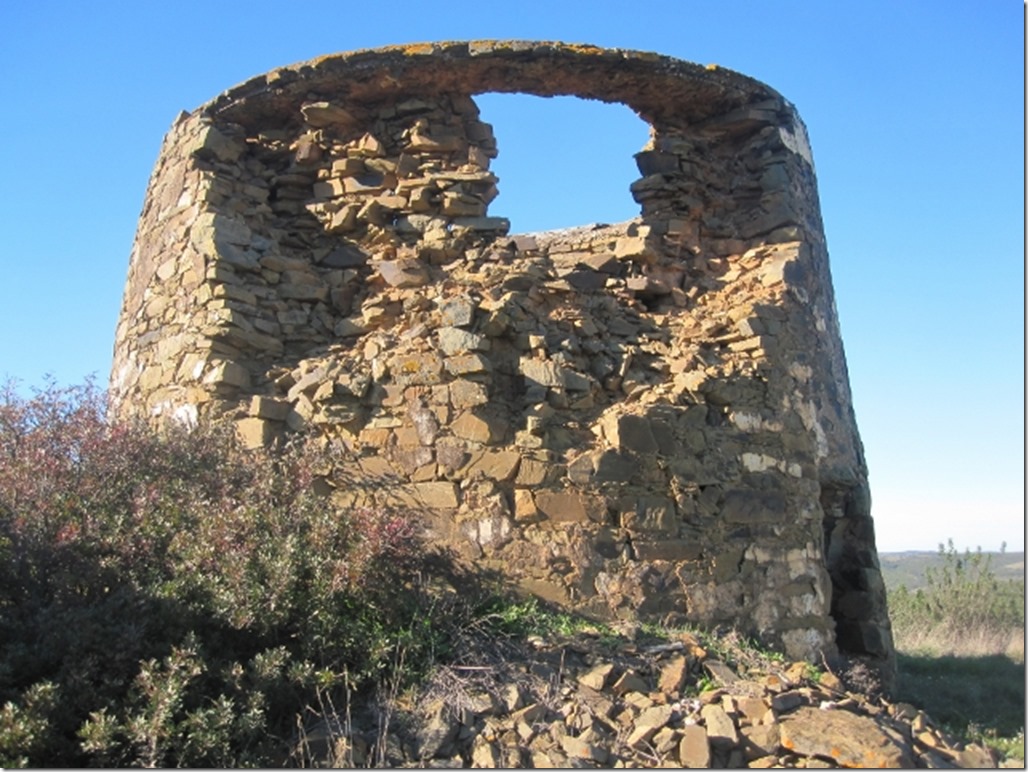
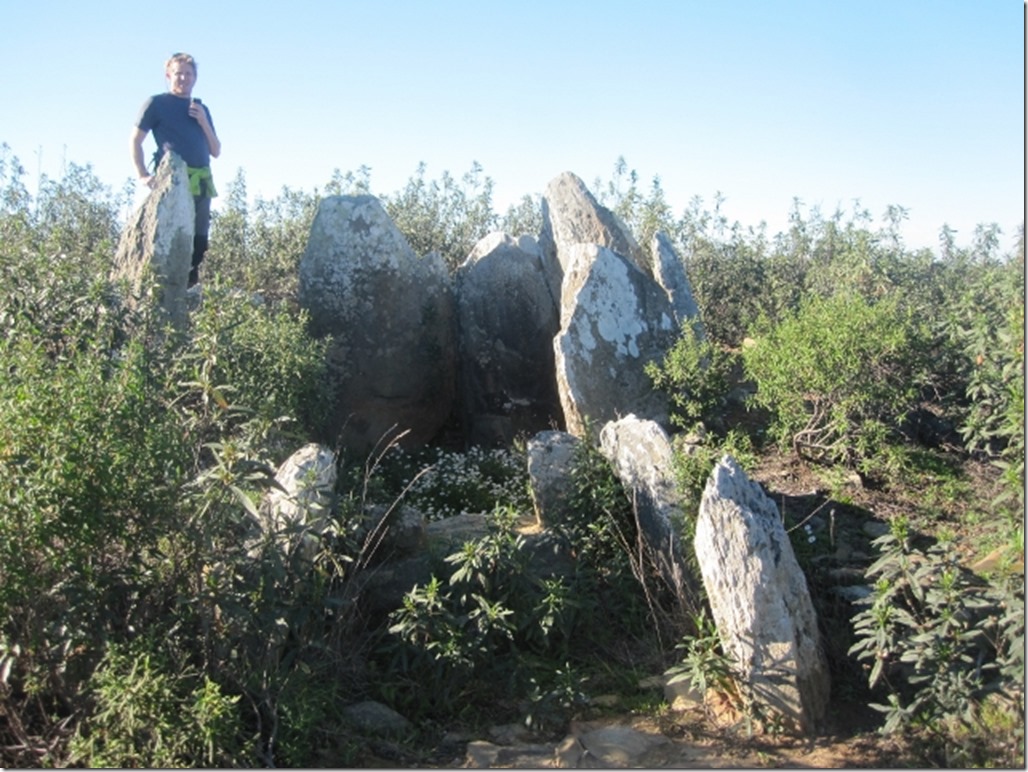
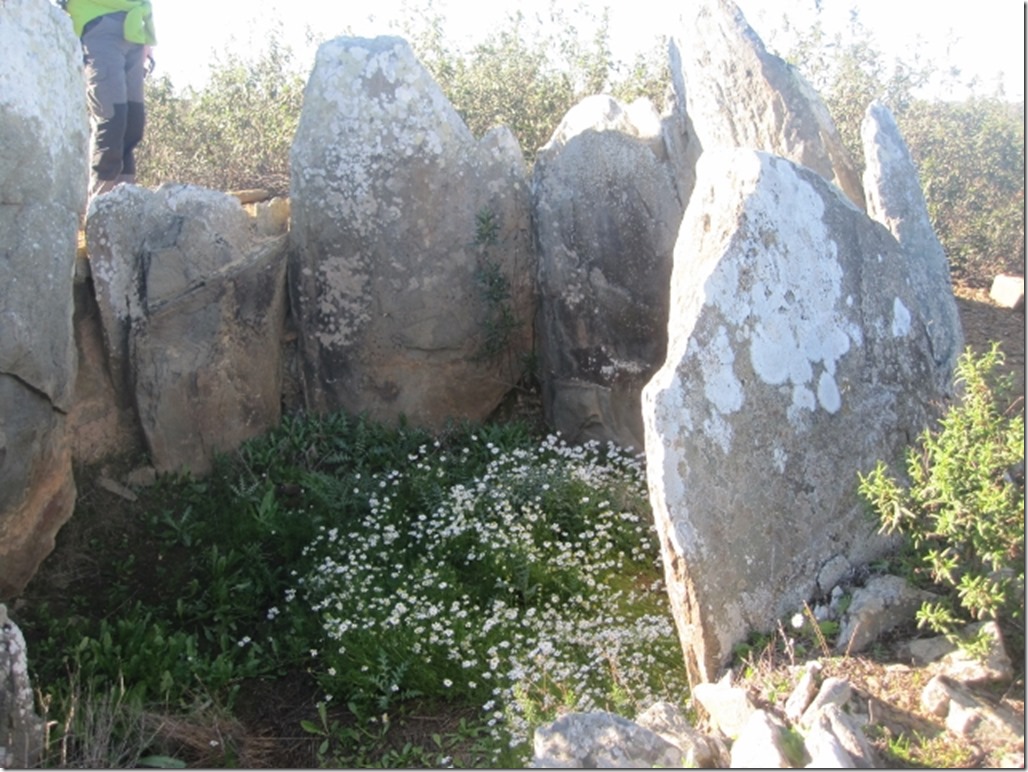
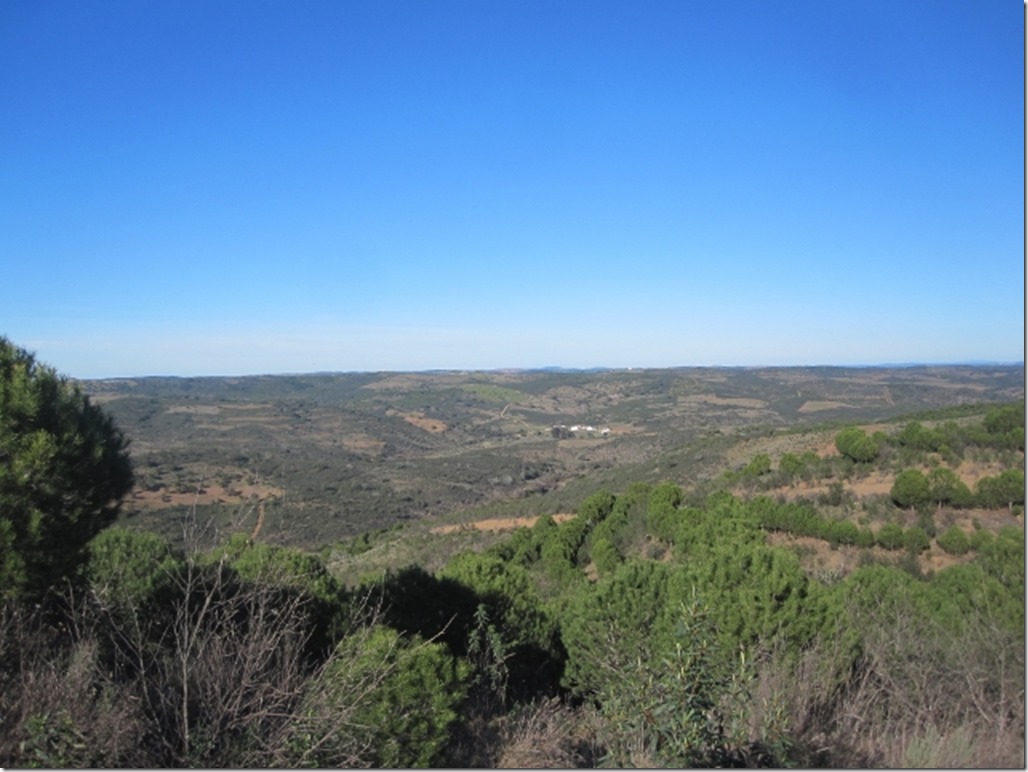
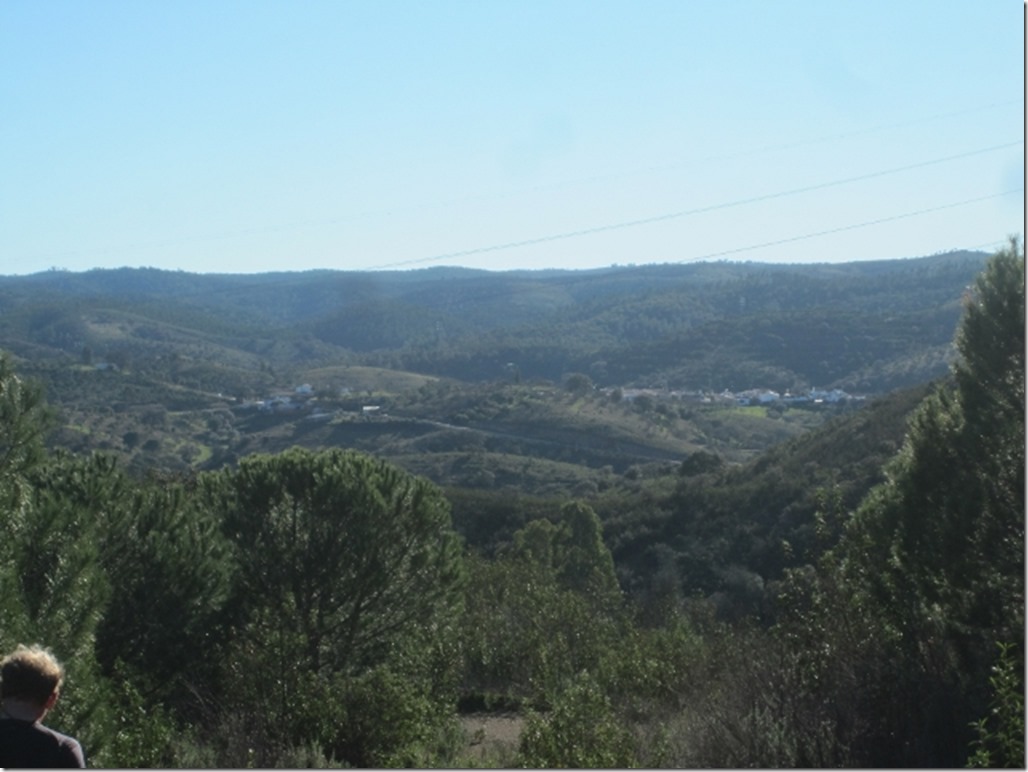
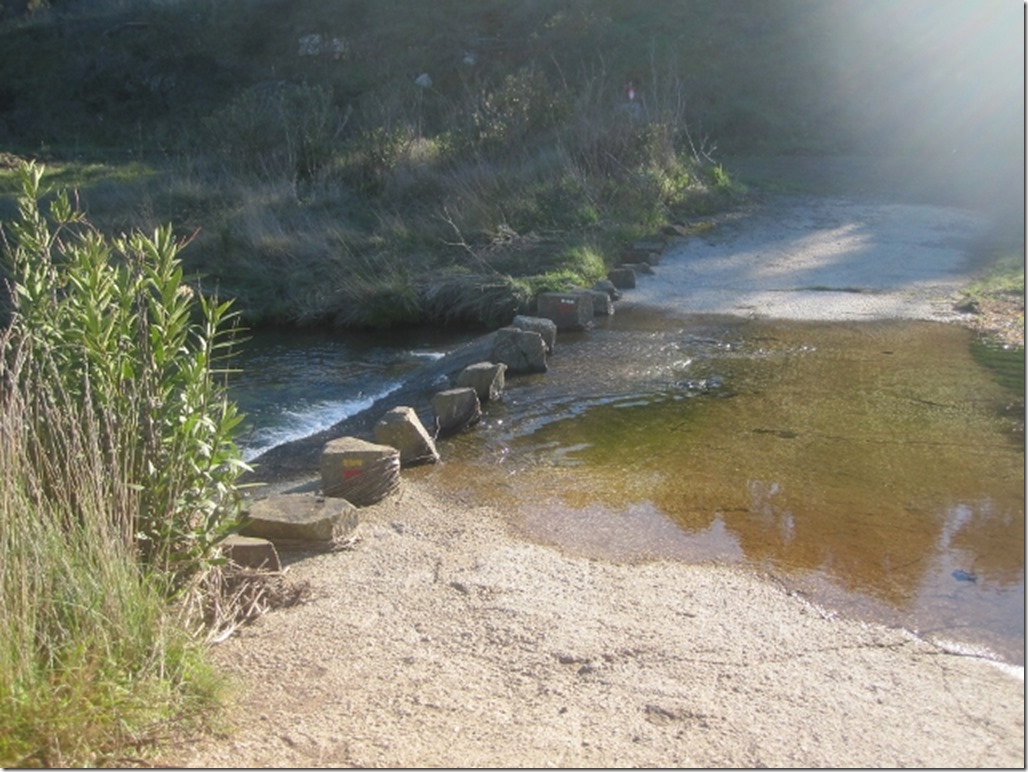
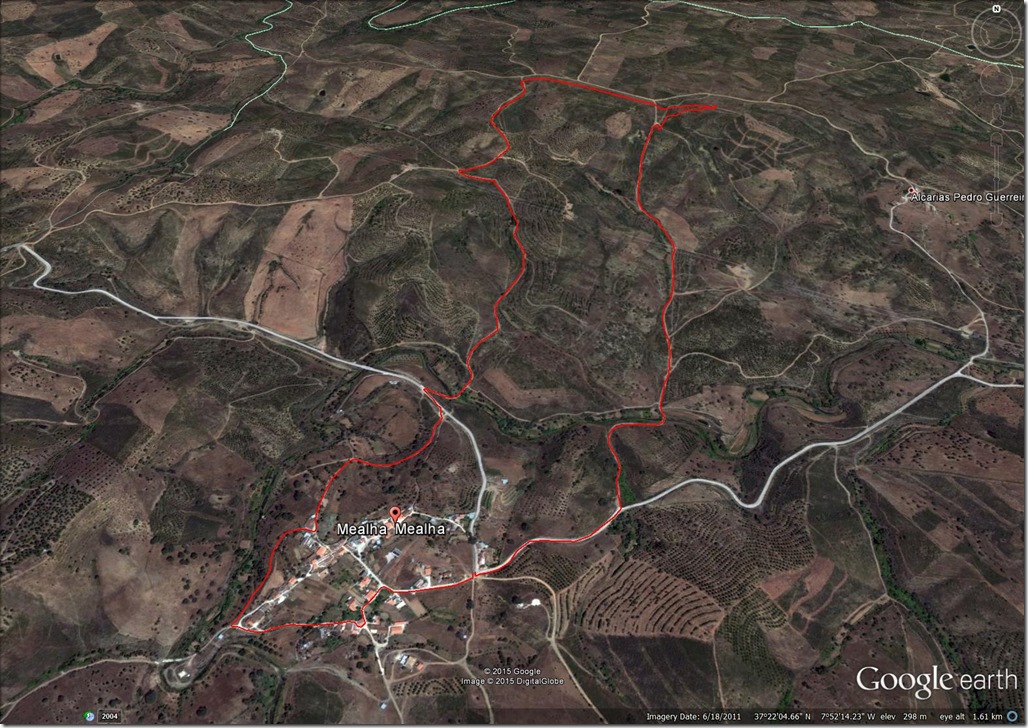






Me gustan las lavadoras manuales, con ellas los técnicos poco trabajo iban a tener.
Da pena ver los pueblos solitarios , solo quedan personas mayores, pero es de comprender, el trabajo es duro y los jóvenes , ya no quieren esos trabajos tan sacrificados.
Me gusta ver tantas fotografías .